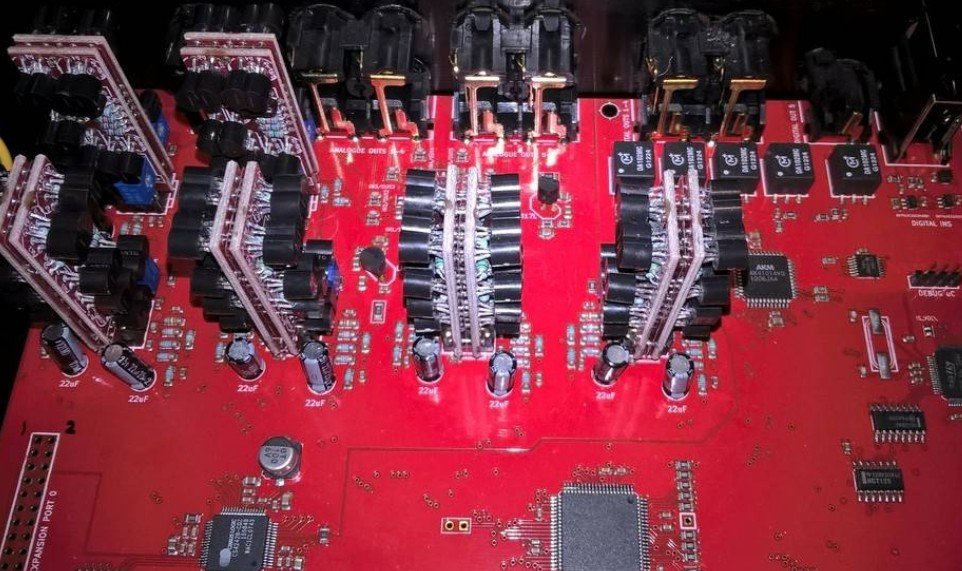Thanks, I love making things. Horns are fun.I love custom horn systems. Mr Multiway, thank you for this fascinating thread. As someone who would love to be able to do this but is completely mechanically cack handed, I am absolutely awestruck by your dedication.
Regards
Wayne
5 way system, horns and more. From the beginning to now
- Thread starter Multiway
- Start date
You are using an out of date browser. It may not display this or other websites correctly.
You should upgrade or use an alternative browser.
You should upgrade or use an alternative browser.
The DIYaudio forum is a great source of all things DIY. There are many professional and semi professionals on that site with a huge wealth of knowledge on pretty much everything.
From acoustics to electronic design, and "Everything between antenna and earth" as a Swedish electronics catalogue used to say.
They are engineers, designers and creators from all walks of life too.
One of the threads that I'd been following was for a new DSP crossover design.
miniDSP had been around for a while with mixed reviews.
There was also a very expensive DCX system- name escapes me at the moment. Edit; remembered it DEQX!
Behringer and other PA focused solutions either lacked functionality or SQ.
There was a Najda thread for the early requirements gathering and design, and a second one for implementation and user support.
The former was great because audio enthusiasts could help shape the functionality and spec of the final product.
The latter was, and still is, a great knowledge base!
It became quite clear that it was designed with great attention tod etail and care.
In true DIY spirit it would not cost an arm and a leg, and you'd have to acquire support parts and build the main board into a viable system.
The name? WAF Audio Najda. The W coming from Wroclaw.
The designer a chap called Nick, resided in Belgium.
Brilliant technical designer / creator, with people skills to see the product though and assist in users getting up and running.
I came to know him quite well though only online..
Unfortunately he disappeared while on a South American (Bolivia) motorcycle odyssey in 2018 and has not been heard of since.
Belgium police officially declared the case closed some time ago
Anyway back to the product.
It came to fruition in late 2013 and I received my board early 2014.
I set about building the systems around it.
+5V and +/-12V power.
Control buttons, push to make contact, IR and LCD display, function indicator LEDs etc.
The early boards did not have pinouts so you had to solder directly
on to the eyelets in the board. There were lots of them!
I made a first lash up test staked out on a breadboard around the end of Jan 2014.
I was one of the first to get it up and running.
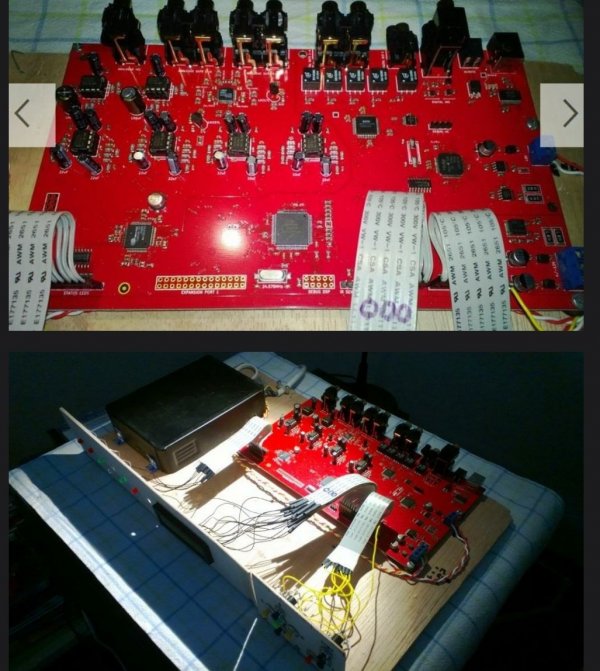
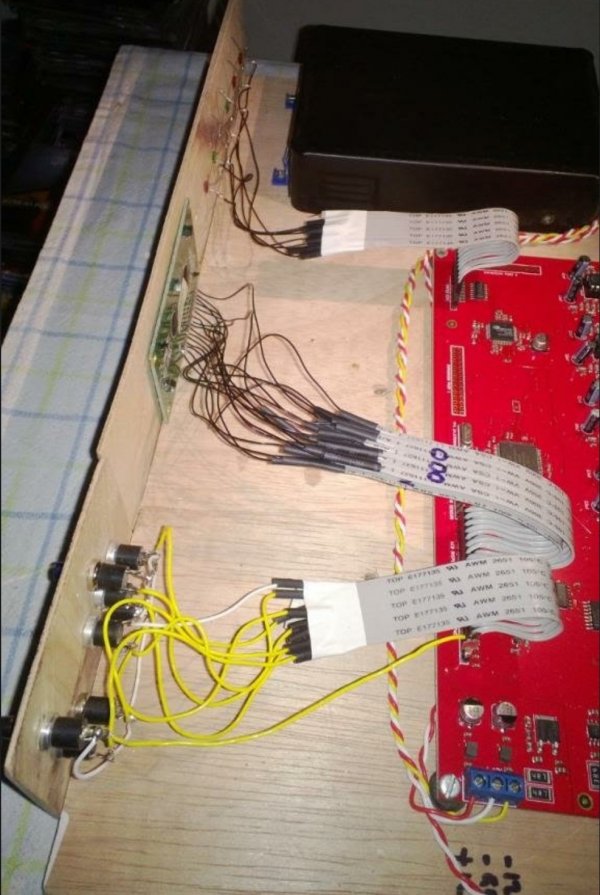
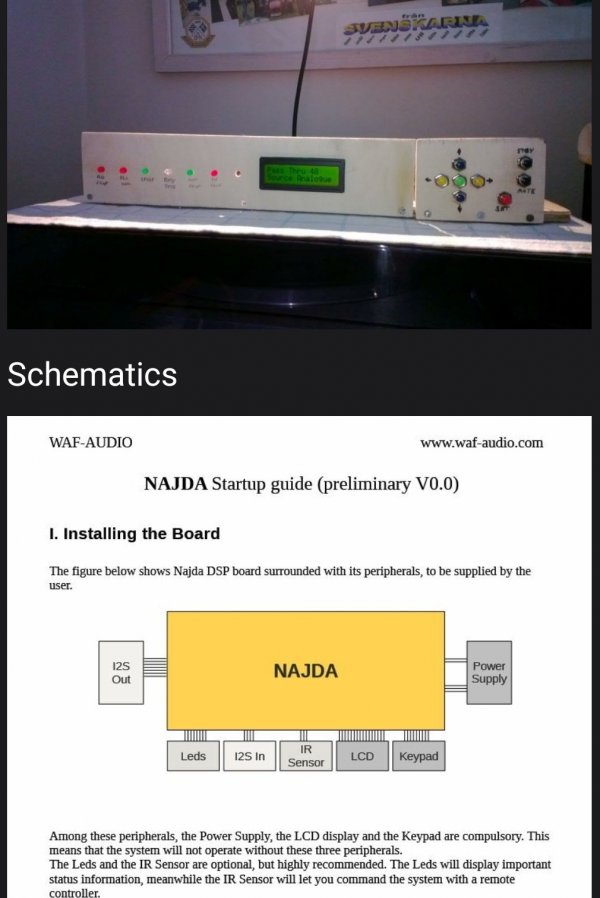
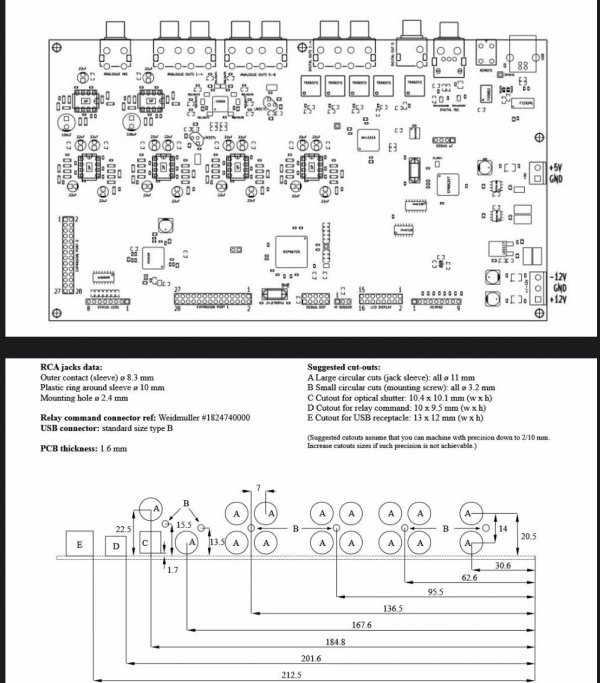
Schematic best world
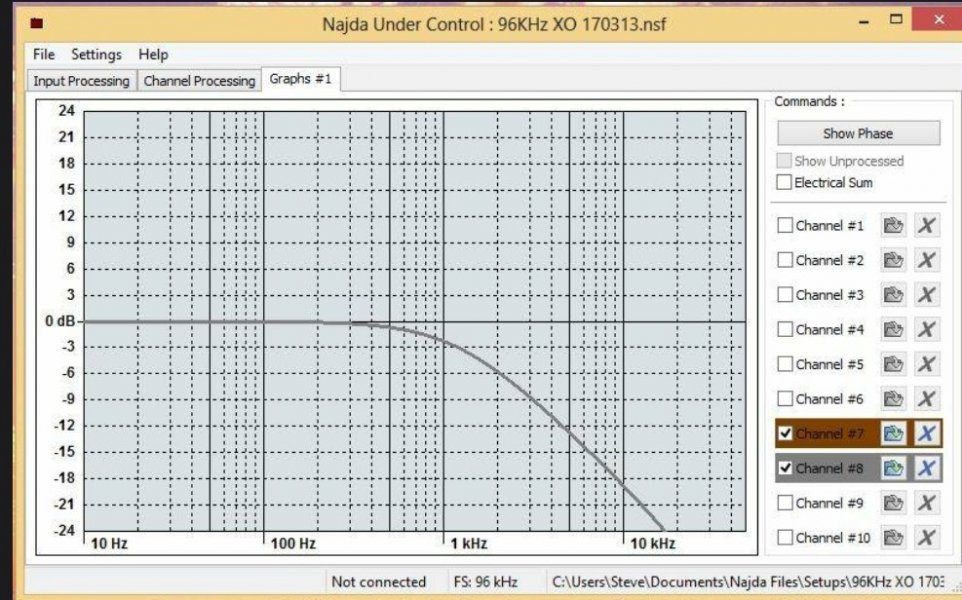
Live monitoring panel
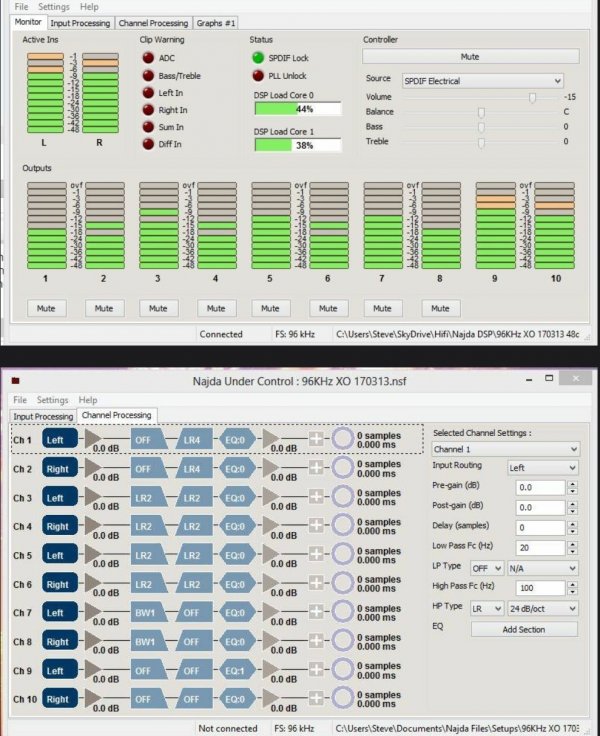
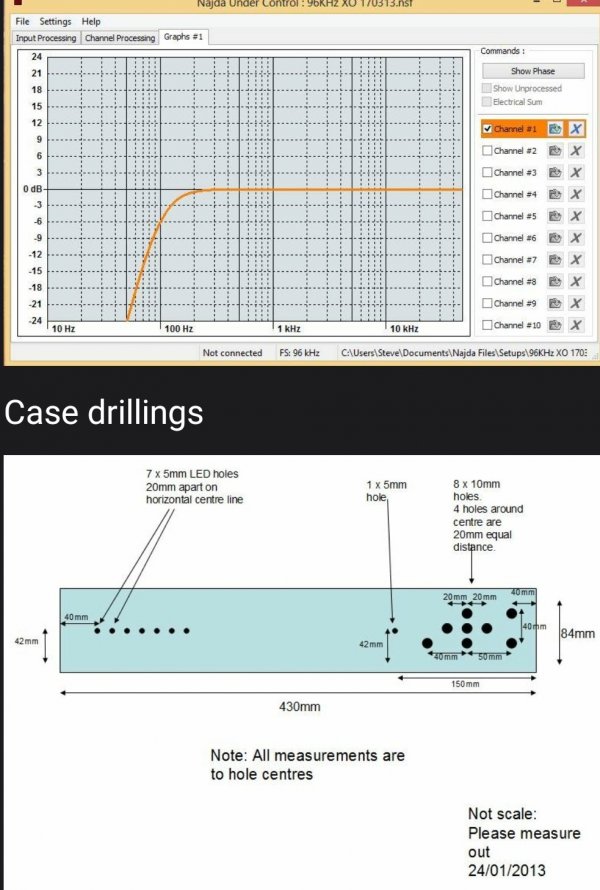
Real life in room at listening area.
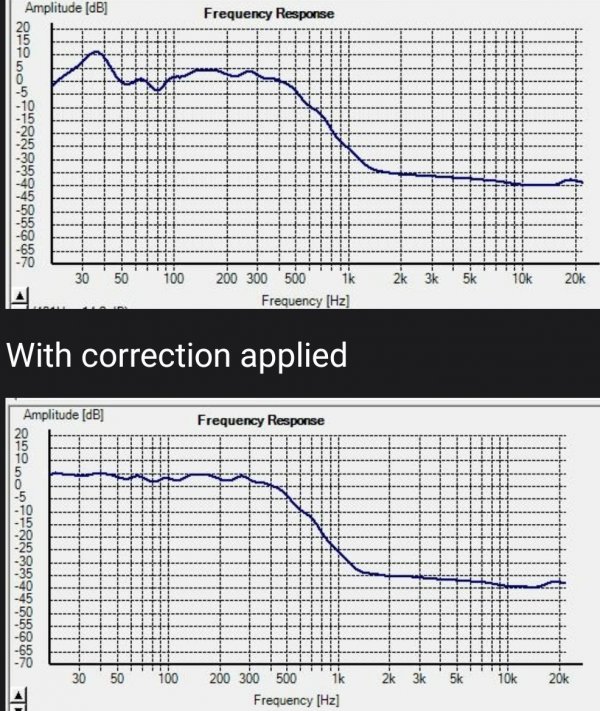
In place and testing.
My lash up was quick and easy, shown here in place and working.
This would replace the DPA Enlightenment DAC, Puresound L10 valve pre and all the passive X/Os permanently!
More on that later..
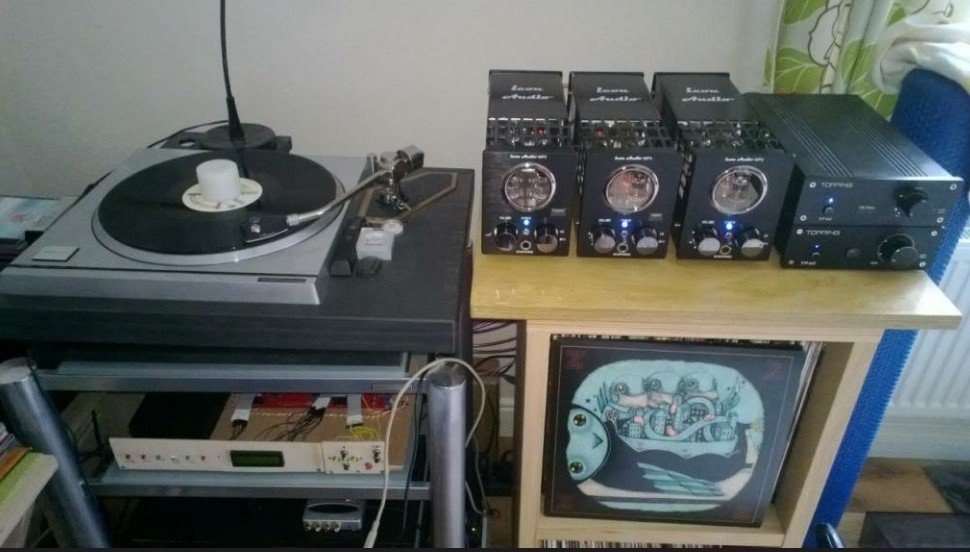
From acoustics to electronic design, and "Everything between antenna and earth" as a Swedish electronics catalogue used to say.
They are engineers, designers and creators from all walks of life too.
One of the threads that I'd been following was for a new DSP crossover design.
miniDSP had been around for a while with mixed reviews.
There was also a very expensive DCX system- name escapes me at the moment. Edit; remembered it DEQX!
Behringer and other PA focused solutions either lacked functionality or SQ.
There was a Najda thread for the early requirements gathering and design, and a second one for implementation and user support.
The former was great because audio enthusiasts could help shape the functionality and spec of the final product.
The latter was, and still is, a great knowledge base!
It became quite clear that it was designed with great attention tod etail and care.
In true DIY spirit it would not cost an arm and a leg, and you'd have to acquire support parts and build the main board into a viable system.
The name? WAF Audio Najda. The W coming from Wroclaw.
The designer a chap called Nick, resided in Belgium.
Brilliant technical designer / creator, with people skills to see the product though and assist in users getting up and running.
I came to know him quite well though only online..
Unfortunately he disappeared while on a South American (Bolivia) motorcycle odyssey in 2018 and has not been heard of since.
Belgium police officially declared the case closed some time ago
Anyway back to the product.
It came to fruition in late 2013 and I received my board early 2014.
I set about building the systems around it.
+5V and +/-12V power.
Control buttons, push to make contact, IR and LCD display, function indicator LEDs etc.
The early boards did not have pinouts so you had to solder directly
on to the eyelets in the board. There were lots of them!
I made a first lash up test staked out on a breadboard around the end of Jan 2014.
I was one of the first to get it up and running.




Schematic best world

Live monitoring panel


Real life in room at listening area.

In place and testing.
My lash up was quick and easy, shown here in place and working.
This would replace the DPA Enlightenment DAC, Puresound L10 valve pre and all the passive X/Os permanently!
More on that later..

Last edited:
I quickly learned in practice what I'd read up on.
Less is more when correcting!
Deep bass can take a lot more than higher frequencies, which are best left pretty much alone, or only a few minor cuts, as notch filters achieve in passive components!
The sound was very good.
Initially I just played my CDP and analogue sources though it, totally on pass though.
I listened and listened, had respected hifi friends round - could detect no sound degradation or colouration whatsoever.
Once I started using its full capabilities, the BIG leap in sound quality I was going to achievewas clear.
The final nail in the coffin for passives was proper time alignment of all channels but with resolution as good, if not better than CDP transport / DPA dac / L10 could achieve!
No longer was the precious analogue signal being pumped through and snapped by lots of indicators, capacitors etc.
Nick had really implemented things well.
I soon set about making a proper case for it.
I wanted a full size - who knew what other input circuitry etc might need to be housed?
Drillings for buttons and LEDs done.
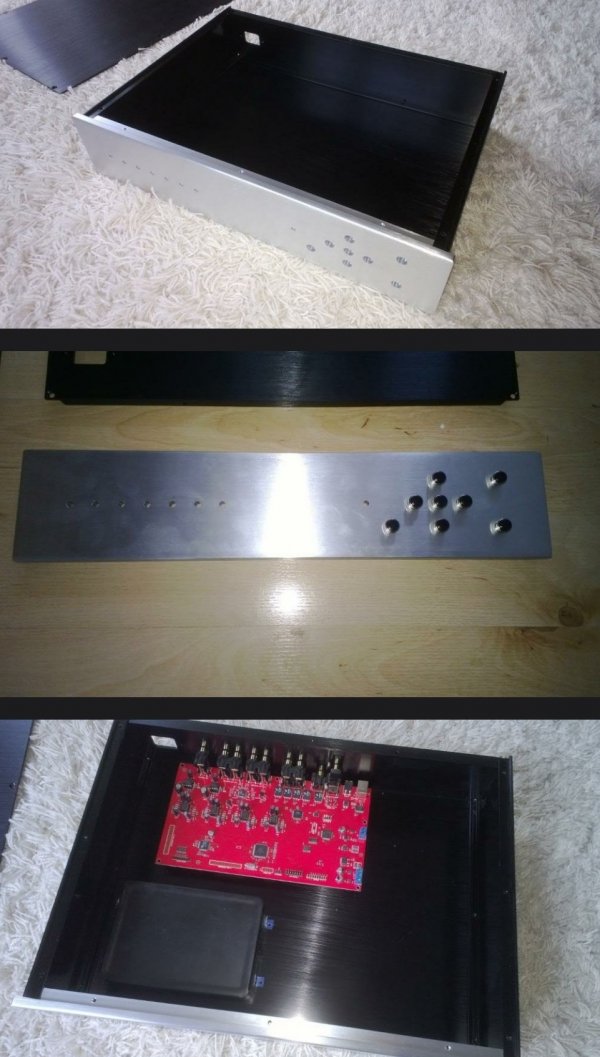
Marking it out the display slot.
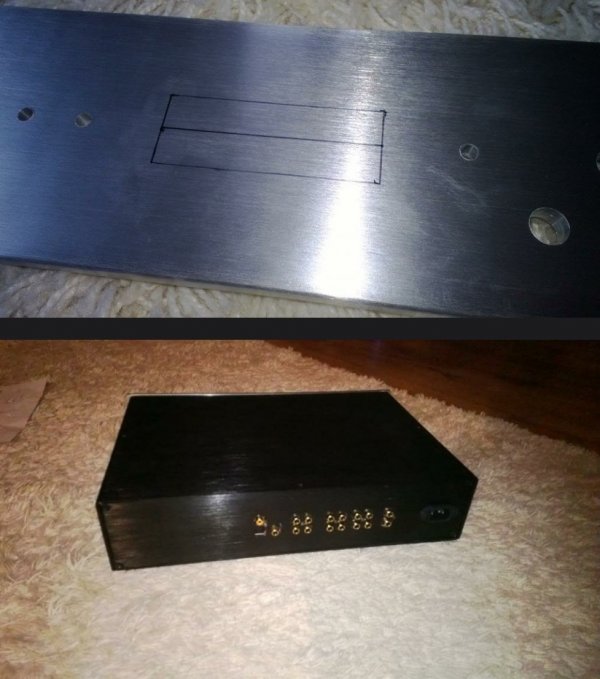
Rear panel was marked out and drilled.
.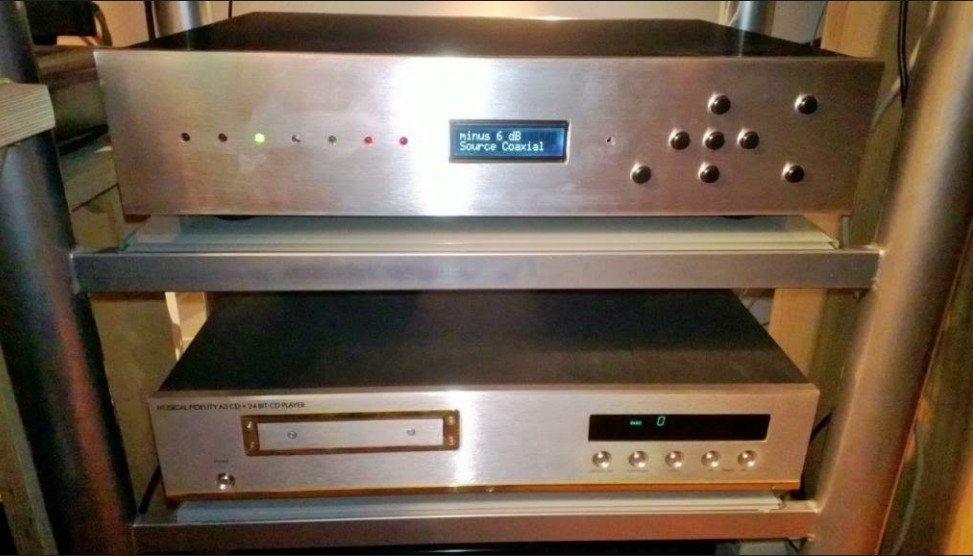
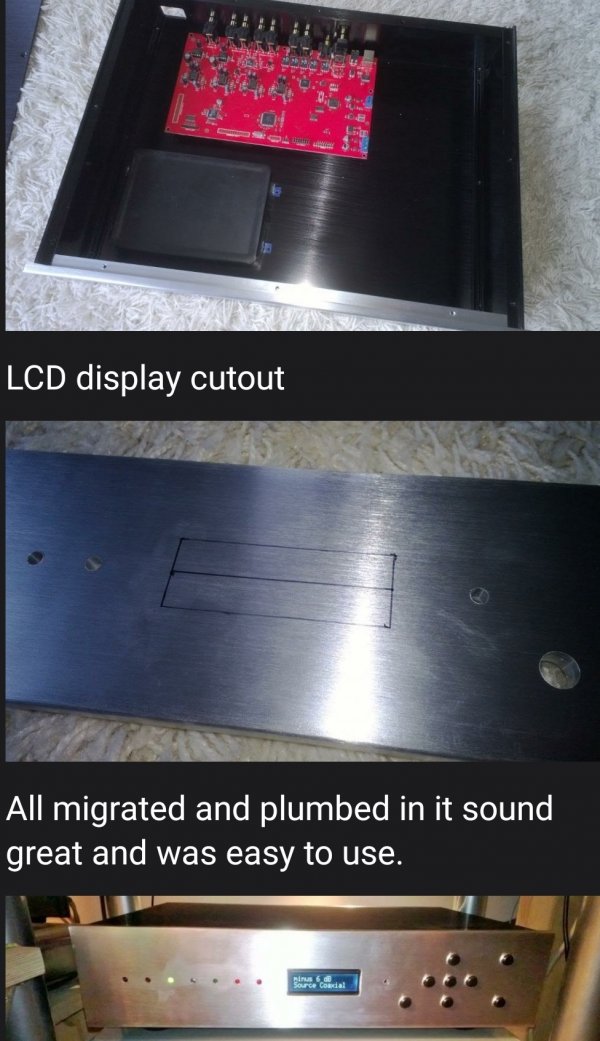
As other DIY'ers from around the world came on board, it became clear that the DAC implementation Nick had made, whilst not being the most expensive, was first rate.
Folk were reporting better sound from Najda than DACs costing many thousands of pounds.
In true DIYAudio spirit the exact components / chipsets used were discussed at length. It was concluded that the implemention was the key, not who made the chipset.
The gain structure and control over input levels was spot on for hifi equipment too.
I had to learn to measure, time time align and implement X/Os that would really please the ear.
Less is more when correcting!
Deep bass can take a lot more than higher frequencies, which are best left pretty much alone, or only a few minor cuts, as notch filters achieve in passive components!
The sound was very good.
Initially I just played my CDP and analogue sources though it, totally on pass though.
I listened and listened, had respected hifi friends round - could detect no sound degradation or colouration whatsoever.
Once I started using its full capabilities, the BIG leap in sound quality I was going to achievewas clear.
The final nail in the coffin for passives was proper time alignment of all channels but with resolution as good, if not better than CDP transport / DPA dac / L10 could achieve!
No longer was the precious analogue signal being pumped through and snapped by lots of indicators, capacitors etc.
Nick had really implemented things well.
I soon set about making a proper case for it.
I wanted a full size - who knew what other input circuitry etc might need to be housed?
Drillings for buttons and LEDs done.

Marking it out the display slot.

Rear panel was marked out and drilled.
.


As other DIY'ers from around the world came on board, it became clear that the DAC implementation Nick had made, whilst not being the most expensive, was first rate.
Folk were reporting better sound from Najda than DACs costing many thousands of pounds.
In true DIYAudio spirit the exact components / chipsets used were discussed at length. It was concluded that the implemention was the key, not who made the chipset.
The gain structure and control over input levels was spot on for hifi equipment too.
I had to learn to measure, time time align and implement X/Os that would really please the ear.
Last edited:
With DSP X/Os ability to shape X/Os and room correction, I was kept busy refining systems sound.
Suspecting the Topping TP amps could be bettered on bass duty, I had a bass amp test session.
With a Behringer iNuke 1000
(Painted black by owner)
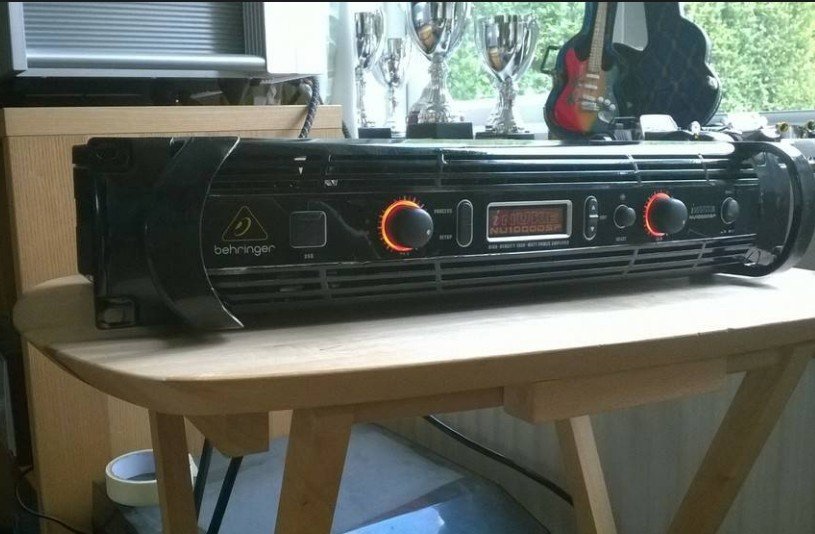
A very expensive beefy full range Chord amp
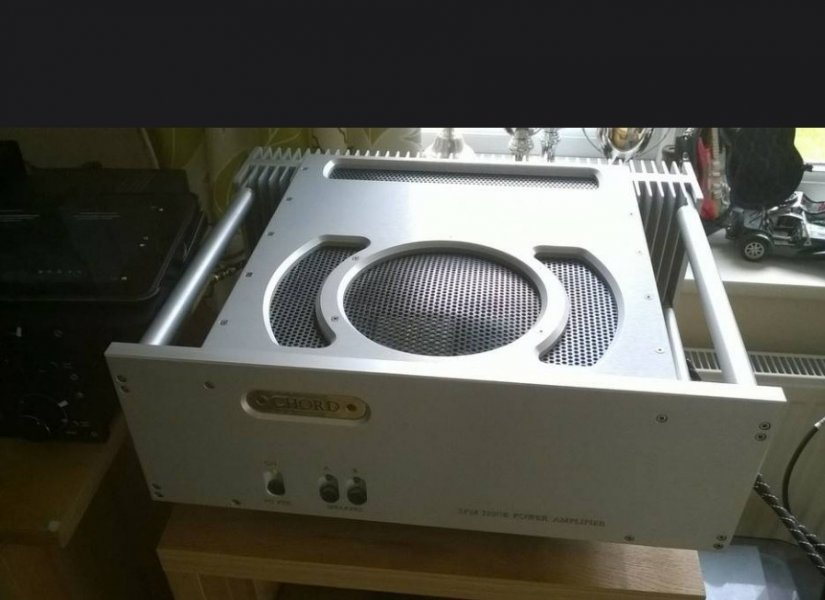
The Behringer out shone the Chord on the tapped horn sub duty - that's probably down to damping factor!
The Chord bettered the Topping TP amp and the Behringer on mid bass - not by that much though!
I acquired a Behringer amp and slowed the very noisy fan down to a whisper.
Not a problem as I was just tickling the amp compared to proper PA duty!
It would have been around this time that Bonzo came and had a first listen.
He wrote at the time..
"I have heard 2 way Cessaro's and 2 and 3 way Avantgarde's, also Tune Audio Animas, so it was awesome to compare them to a 5-way horn system which was DIY. Steve ran me through what each driver meant and what specific frequency he covered. I had never heard a church organ in an hifi before, but Steve's tapped horns go down so low that it feels you are listening to new notes in classical, ones that you would not know existed. Jan 2014"
Bonzo would revisit a few years later and will be here this spring/summer to catch up on the latest developments.
There's been quite a few changes and improvements..
I then performed a 4 way test
Temporarily redundant Vitavox S2 and tractrix horn in the background.
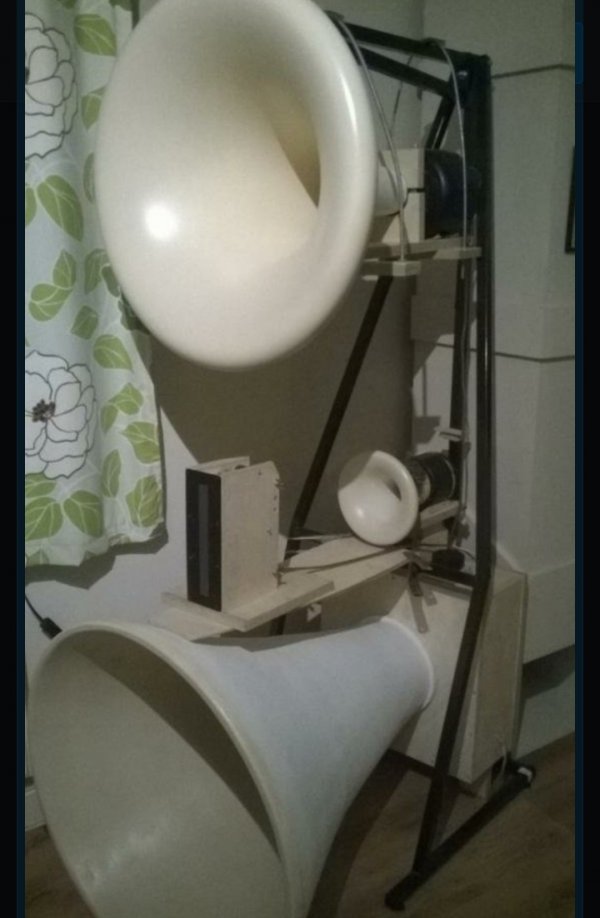
Very much lowered stack.
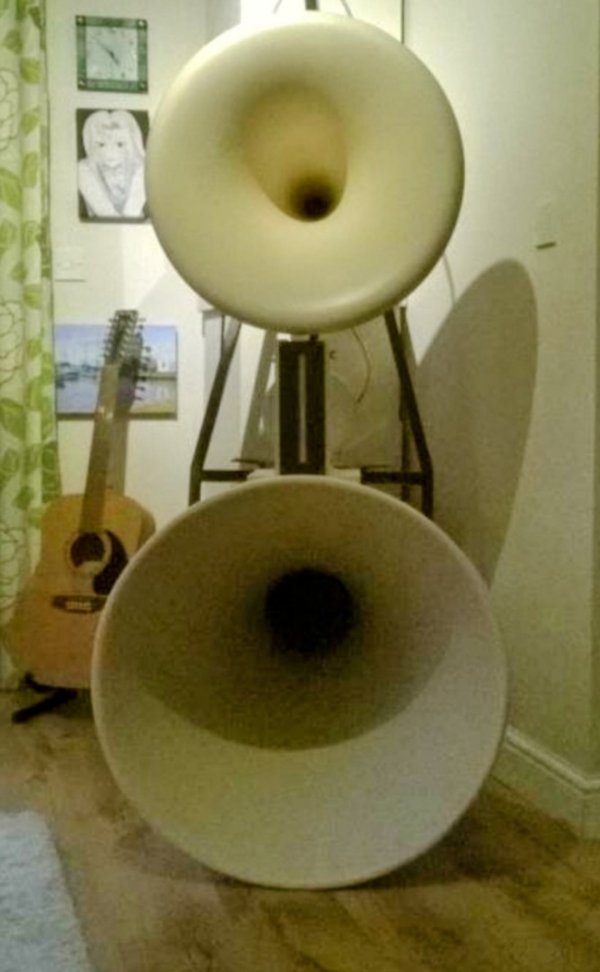
Running the JBL2482 mid drivers up to 3500Hz and the Real Lazy ribbons right down.
The Vitaxox S2s were temporarily redundant!
Time aligned in DSP of course..
This setup once tweaked sounded pretty good.
If I'd never have heard the S2s, I could have easily lived with it!
But I missed the extreme realism and dynamics / what the S2s do so well.
They were back in a flash!
Then I acquired a pair of 400Hz tractrix horns for the upper mids (S2s).
These proved rather nice, and while the 550Hz had their charm, so did the 400s
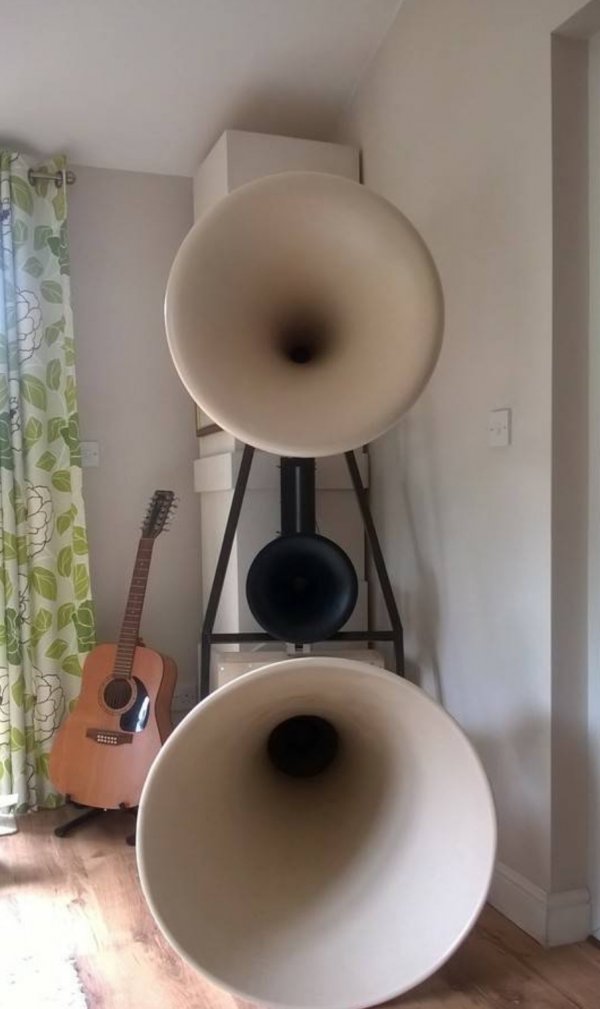
Some I demo'd these to, preferred them..
Next up - a move, OPamp upgrade, more amps, configurations, configurations
Suspecting the Topping TP amps could be bettered on bass duty, I had a bass amp test session.
With a Behringer iNuke 1000
(Painted black by owner)

A very expensive beefy full range Chord amp

The Behringer out shone the Chord on the tapped horn sub duty - that's probably down to damping factor!
The Chord bettered the Topping TP amp and the Behringer on mid bass - not by that much though!
I acquired a Behringer amp and slowed the very noisy fan down to a whisper.
Not a problem as I was just tickling the amp compared to proper PA duty!
It would have been around this time that Bonzo came and had a first listen.
He wrote at the time..
"I have heard 2 way Cessaro's and 2 and 3 way Avantgarde's, also Tune Audio Animas, so it was awesome to compare them to a 5-way horn system which was DIY. Steve ran me through what each driver meant and what specific frequency he covered. I had never heard a church organ in an hifi before, but Steve's tapped horns go down so low that it feels you are listening to new notes in classical, ones that you would not know existed. Jan 2014"
Bonzo would revisit a few years later and will be here this spring/summer to catch up on the latest developments.
There's been quite a few changes and improvements..
I then performed a 4 way test
Temporarily redundant Vitavox S2 and tractrix horn in the background.

Very much lowered stack.

Running the JBL2482 mid drivers up to 3500Hz and the Real Lazy ribbons right down.
The Vitaxox S2s were temporarily redundant!
Time aligned in DSP of course..
This setup once tweaked sounded pretty good.
If I'd never have heard the S2s, I could have easily lived with it!
But I missed the extreme realism and dynamics / what the S2s do so well.
They were back in a flash!
Then I acquired a pair of 400Hz tractrix horns for the upper mids (S2s).
These proved rather nice, and while the 550Hz had their charm, so did the 400s

Some I demo'd these to, preferred them..
Next up - a move, OPamp upgrade, more amps, configurations, configurations
Last edited:
We moved from Surrey near Guildford / Woking to the New Forest in Dec 2015.
The new dedicated hifi room was 7m long and 3.5m wide.
Apex ceiling, loft room.
There was no problem getting the regular hifi / horns up.
The tapped horn subs were too tall to pass around the angled staircase though.
Solution - yes, cut them in half / rebuild them up there.
They had to lie down in this room along the sides
I used them to support the mid horns and quickly made some simple but adjustable upper mid / tweeter supports (still in use today).
Once settled in, I tried an outwide config, and a stack without tweeter.
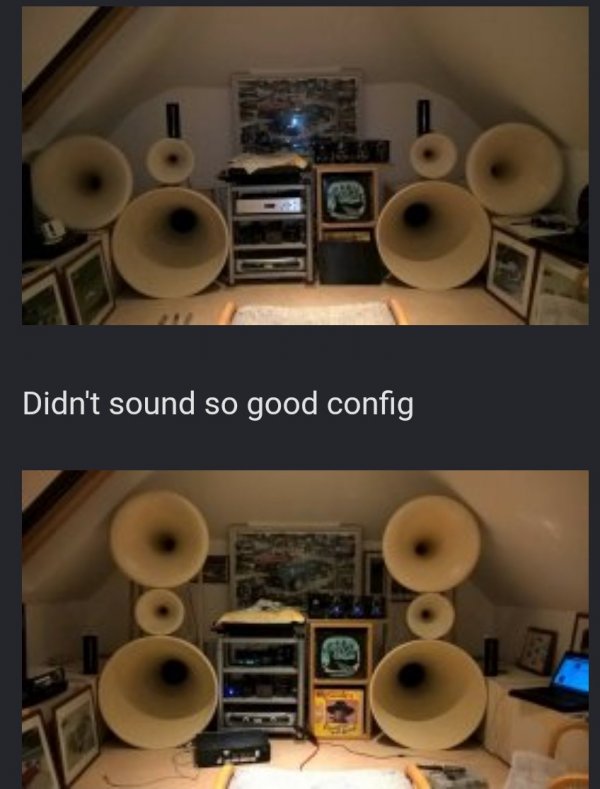
The above sounded rather boring compared to the outwide..
Everything but the bass worked out of the box.
The room proved to be quite well damped and not bright or obnoxious, on all but the bass.
A massive room mode at 30Hz was tamed by Najda. It was 35Hz in the previous room.
Found the best bass response was the tapped horn subs exiting in the corner (most corner loading) but firing upwards!
That was about it.
I time aligned the system and could then enjoy it.
I also bought some beefier amps for the bass
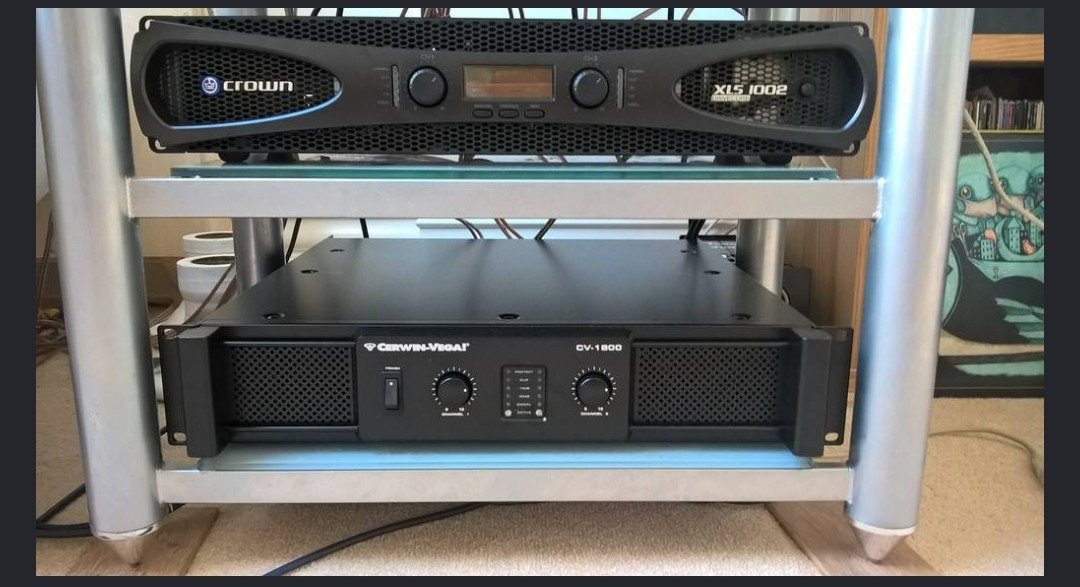
A big heavy Cerwin Vega 1800 for the tapped horns.
This has a huge damping factor > 250, it really gets a grip of the tapped horn sub Eminence Kappa Pro LFII drivers, and starts/stops them amazingly.
Still gives tuneful bass never fear!
I modified the noisy fan to run a half speed - fine for domestic duty. I rarely even get one of the many power lights on work efficient horns!
On midbass duty a sweeter sounding Crown amp.
Next up, Burson OPamps upgrade for Najda DSP pre XO and seating positions.
The new dedicated hifi room was 7m long and 3.5m wide.
Apex ceiling, loft room.
There was no problem getting the regular hifi / horns up.
The tapped horn subs were too tall to pass around the angled staircase though.
Solution - yes, cut them in half / rebuild them up there.
They had to lie down in this room along the sides
I used them to support the mid horns and quickly made some simple but adjustable upper mid / tweeter supports (still in use today).
Once settled in, I tried an outwide config, and a stack without tweeter.

The above sounded rather boring compared to the outwide..
Everything but the bass worked out of the box.
The room proved to be quite well damped and not bright or obnoxious, on all but the bass.
A massive room mode at 30Hz was tamed by Najda. It was 35Hz in the previous room.
Found the best bass response was the tapped horn subs exiting in the corner (most corner loading) but firing upwards!
That was about it.
I time aligned the system and could then enjoy it.
I also bought some beefier amps for the bass

A big heavy Cerwin Vega 1800 for the tapped horns.
This has a huge damping factor > 250, it really gets a grip of the tapped horn sub Eminence Kappa Pro LFII drivers, and starts/stops them amazingly.
Still gives tuneful bass never fear!
I modified the noisy fan to run a half speed - fine for domestic duty. I rarely even get one of the many power lights on work efficient horns!
On midbass duty a sweeter sounding Crown amp.
Next up, Burson OPamps upgrade for Najda DSP pre XO and seating positions.
Next came a OPamp update for Najda.
I chose Burson.
Good job I chose a nice high case for Najda.
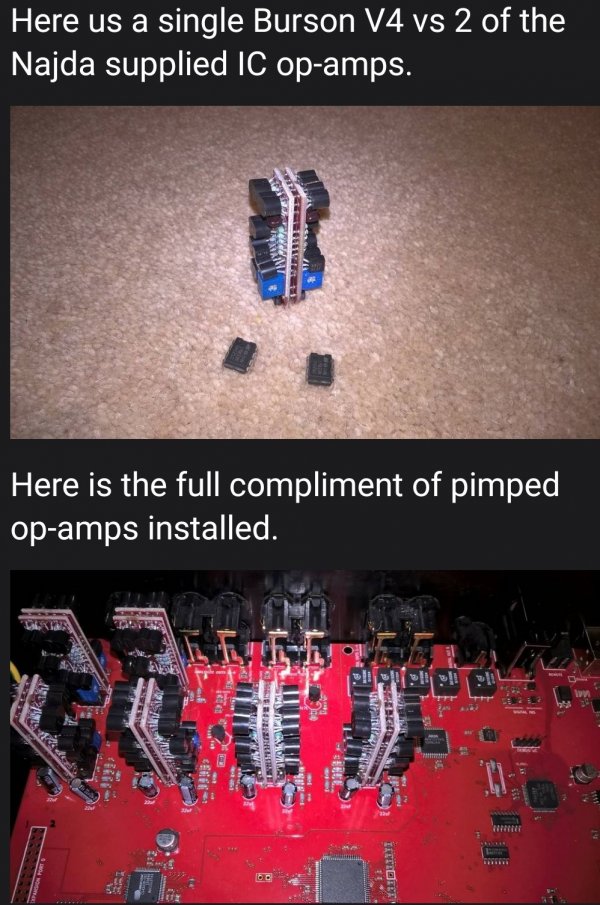
6 paired units were required. They made the sound slightly more vivid and fluid.
But the original Najda implementation was not far off, and a lot cheaper.
I also made sure I was sitting around 14ft from the mid bass horn mouths.
This is important to get the kick effect.
Sit too close and some of that is lost.
Over the years I have refined the crossover points, played with room correction here and there, but the bedrock of the bass / mid upper mid and tweeters remain the same
Next thing I want to improve was streaming off flac files from my laptop.
I had tried USB to SPdif converters but nothing really sounded good.
I was still using CDs and trusty Technics SP-10 as well.
Enter WaveIO, a specialist designed coverter from USB to native I2S.
I2S is the protocol used to move data around CD players and DACs.
My Najda DSP pre X/O etc was designed to receive I2S inputs, and the designer recommended that route in.
Here is the WaveIO board
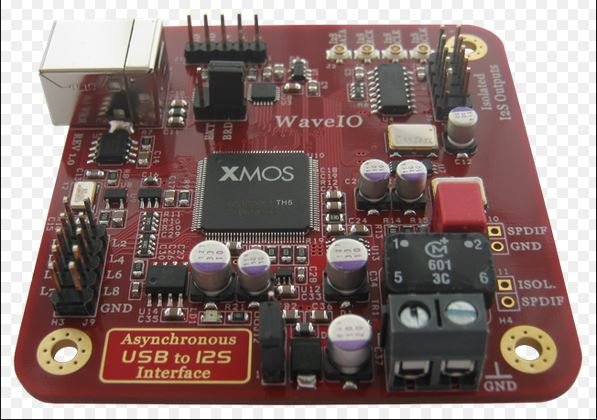
Give it 5V, plug in the USB cable, connect it up and it does it's thing.
One thing to note though is that the wires from it to the input need to be very short, 4cm or less in fact.
The wiring was a bit complicated, but I sorted it out and got it going

In place, wiring short and tidied.
Best to wrap an earth around each if the 'data signal' etc carriers.
Positioned really close to the Najda board's Expansion port.
Like this.
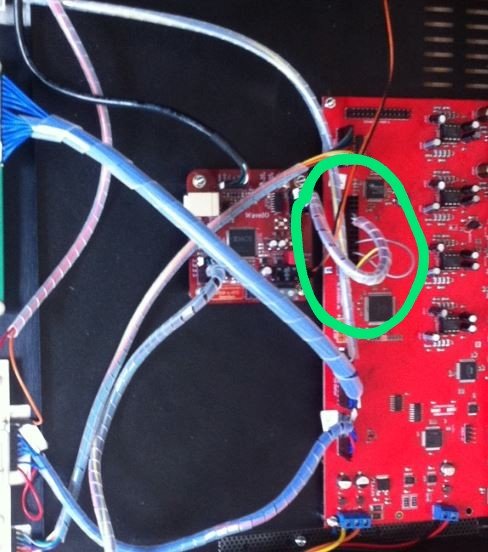
It raised the bar significantly.
With a dedicated pared down Laptop it got close enough to CD not to worry about it.
I chose Burson.
Good job I chose a nice high case for Najda.

6 paired units were required. They made the sound slightly more vivid and fluid.
But the original Najda implementation was not far off, and a lot cheaper.
I also made sure I was sitting around 14ft from the mid bass horn mouths.
This is important to get the kick effect.
Sit too close and some of that is lost.
Over the years I have refined the crossover points, played with room correction here and there, but the bedrock of the bass / mid upper mid and tweeters remain the same
Next thing I want to improve was streaming off flac files from my laptop.
I had tried USB to SPdif converters but nothing really sounded good.
I was still using CDs and trusty Technics SP-10 as well.
Enter WaveIO, a specialist designed coverter from USB to native I2S.
I2S is the protocol used to move data around CD players and DACs.
My Najda DSP pre X/O etc was designed to receive I2S inputs, and the designer recommended that route in.
Here is the WaveIO board

Give it 5V, plug in the USB cable, connect it up and it does it's thing.
One thing to note though is that the wires from it to the input need to be very short, 4cm or less in fact.
The wiring was a bit complicated, but I sorted it out and got it going

In place, wiring short and tidied.
Best to wrap an earth around each if the 'data signal' etc carriers.
Positioned really close to the Najda board's Expansion port.
Like this.

It raised the bar significantly.
With a dedicated pared down Laptop it got close enough to CD not to worry about it.
Attachments
For quite some time I'd considered trying 12" drivers on mid bass 100Hz to 400Hz, instead of the touted heavier and more ponderous 15" drivers.
My hyperbolic profile horns for need an extension at the throat and some smoothing over.
Around 2018 I got serious about it.
Here's the Hornresp model data.
I tried various drivers.
Eminence Kappa 12A proved excellent.
Several other hornists I know use this driver - for good reason.
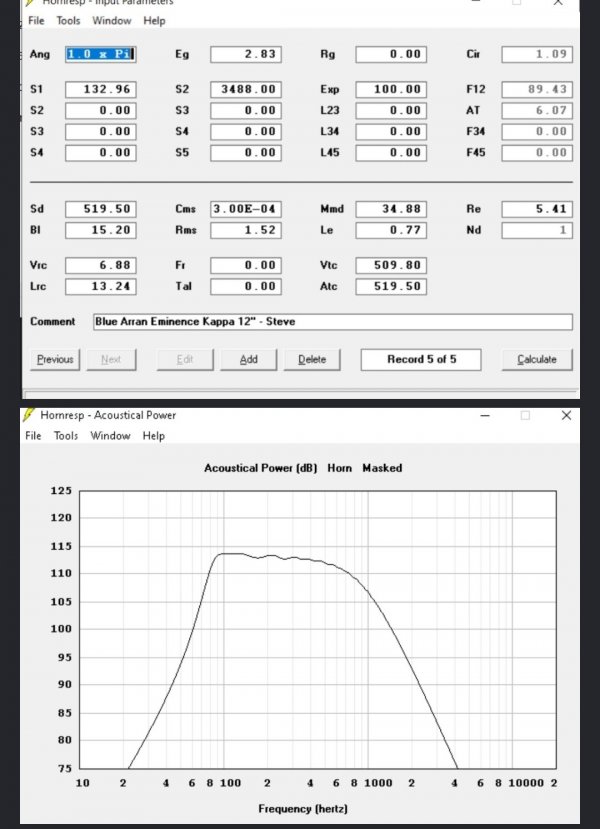
The full horn profile. I would make just the extra throat and add it on.
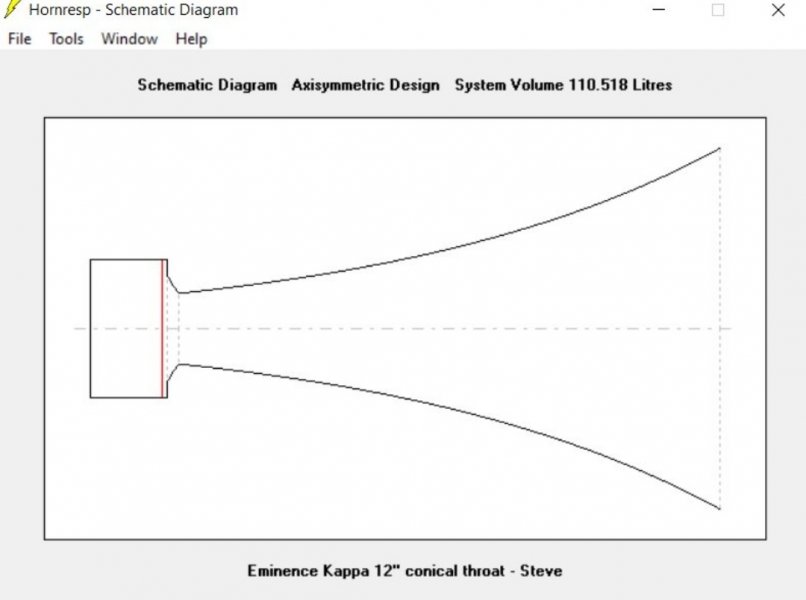
20cm extra
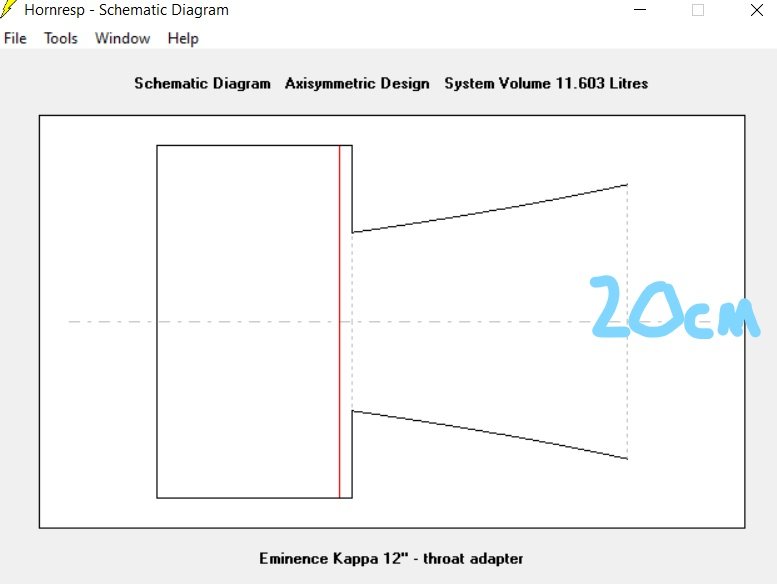
How it looked before finishing.
Note the much smaller throat diameter giving the right compression ratio.
As per the model for the 12" driver.
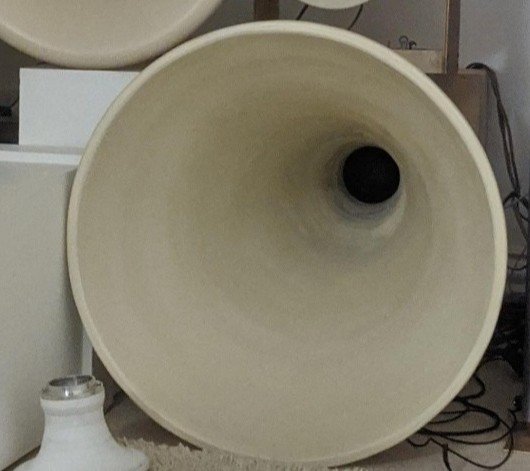
The result was pleasing.
Greater musicality to the midbass, tighter faster, more kick.
Here's how she measured
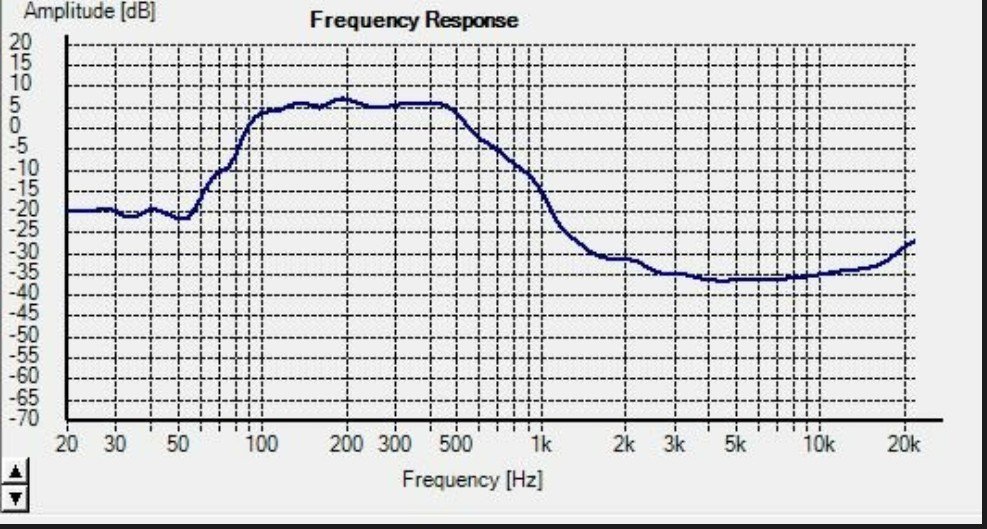
Nice extension to over 400Hz.
The shorter hyperbolic with large throat and 15" driver was soon forgotten.
Up next; going Le Cléac'h.
My hyperbolic profile horns for need an extension at the throat and some smoothing over.
Around 2018 I got serious about it.
Here's the Hornresp model data.
I tried various drivers.
Eminence Kappa 12A proved excellent.
Several other hornists I know use this driver - for good reason.

The full horn profile. I would make just the extra throat and add it on.

20cm extra

How it looked before finishing.
Note the much smaller throat diameter giving the right compression ratio.
As per the model for the 12" driver.

The result was pleasing.
Greater musicality to the midbass, tighter faster, more kick.
Here's how she measured

Nice extension to over 400Hz.
The shorter hyperbolic with large throat and 15" driver was soon forgotten.
Up next; going Le Cléac'h.
Last edited:
I had been reading lots of discussion about horn profiles.
Le Cléac'h are often stated as the most sweet balanced easy sounding of all!
Their completely wrap around mouths, slightly faster opening profile than tractrix has real maths behind it.
Jean Michelle Le Cléac'h is sadly no longer with us, but he was a well respected contributor on DIYaudio too.
There were and probably still are, horn listening gatherings where various horn profiles were played and judged against each other. Blind testing!
The problem with the Le Cléac'h profile is that as frequency gets lower the horn diameters get huge!
A 400Hz cutoff Tractrix is about 28cm across. The same in Le Cléac'h profile is 48cm!
A 200Hz horn is 94cm in diameter.
A mid bass horn would be over 2m!
Not practical in most domestic settings..
Forget sub bass
Higher frequency is doable though.
I decided to make a 550Hz Le Cléac'h horn to compare with the T-400.
At 32cm across it wouldn't fit on my lathe..
I made a simple horn lathe out of my 30cm diameter end sander.
It rotates nice and fast too.
The profile from Hornresp
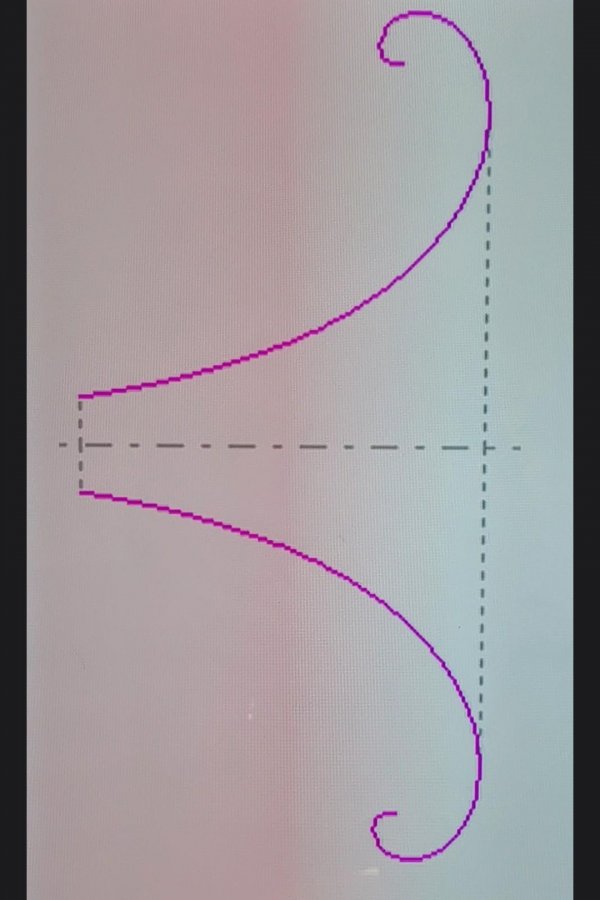
Template guide made
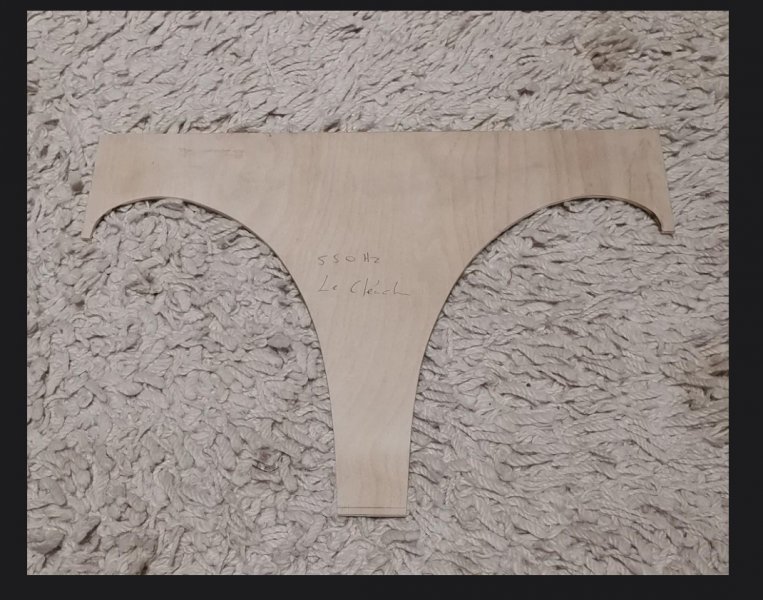
Gluing up some nice cheap soft wood.
I made a simple tool rest and off we go
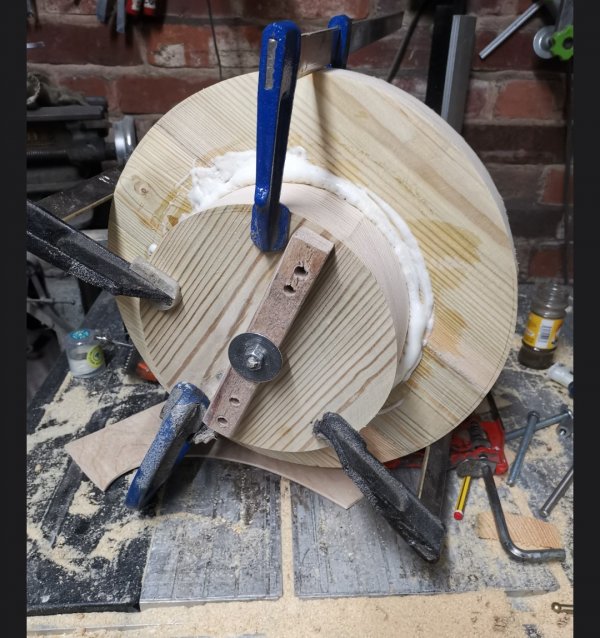
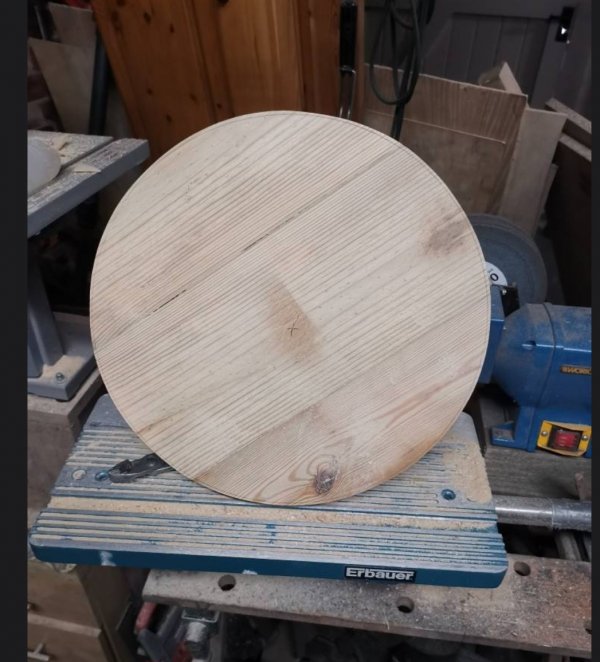
The larger flare part
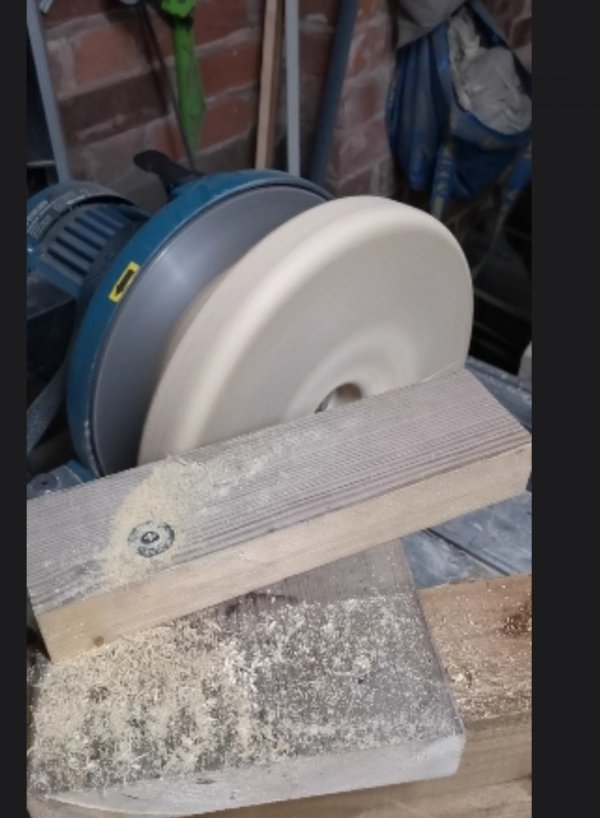
Starting turning, took quite a while to get it balanced though
High speed smoothing
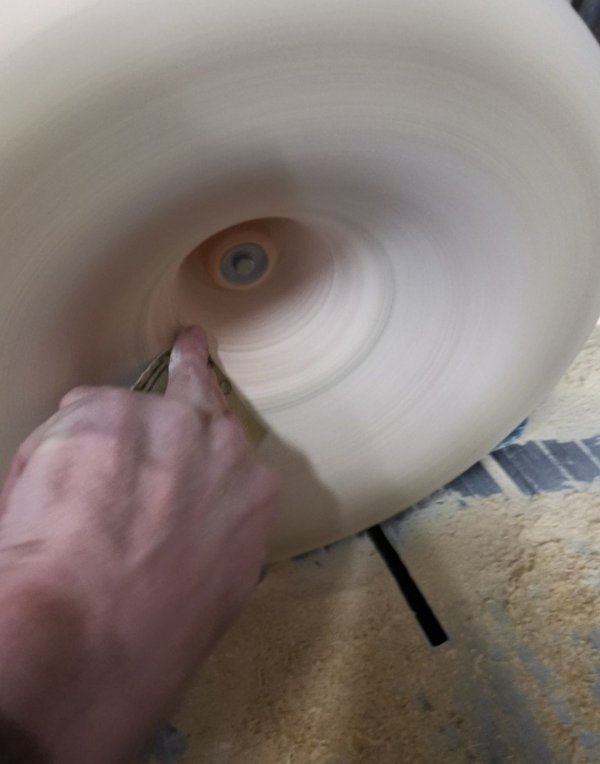
Throat profiling
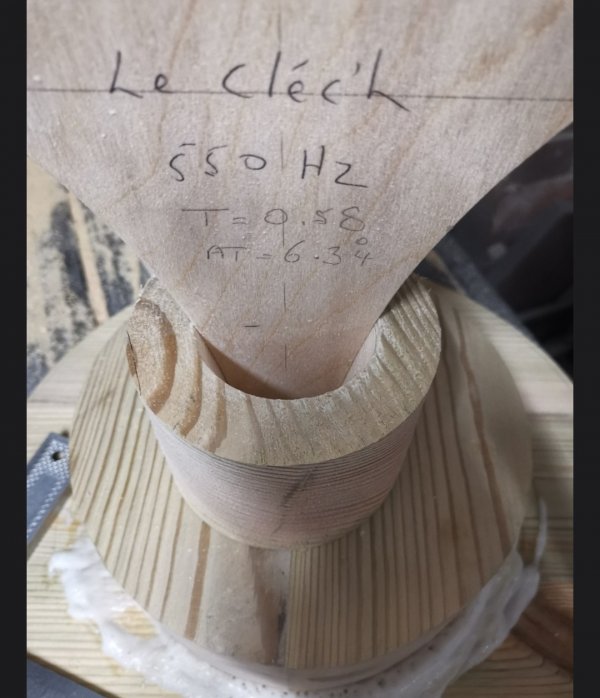
Glued together
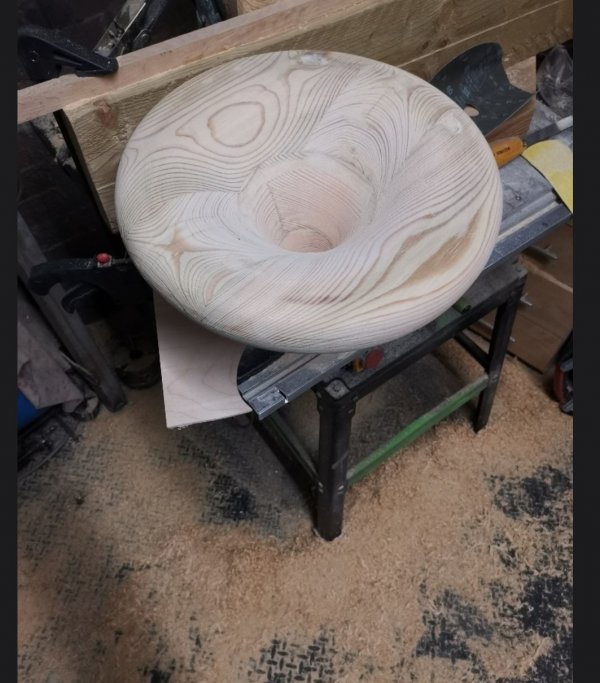
Then a pair
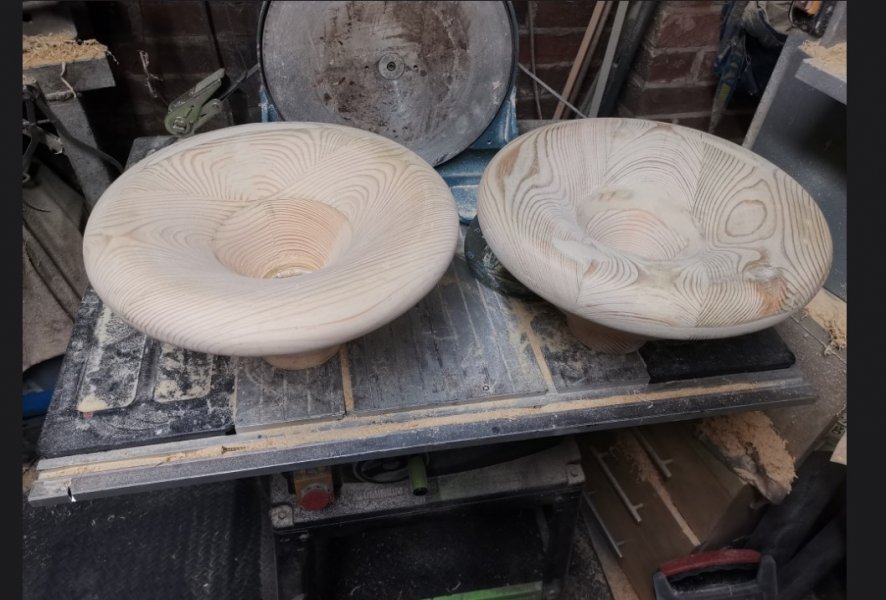
Test listening
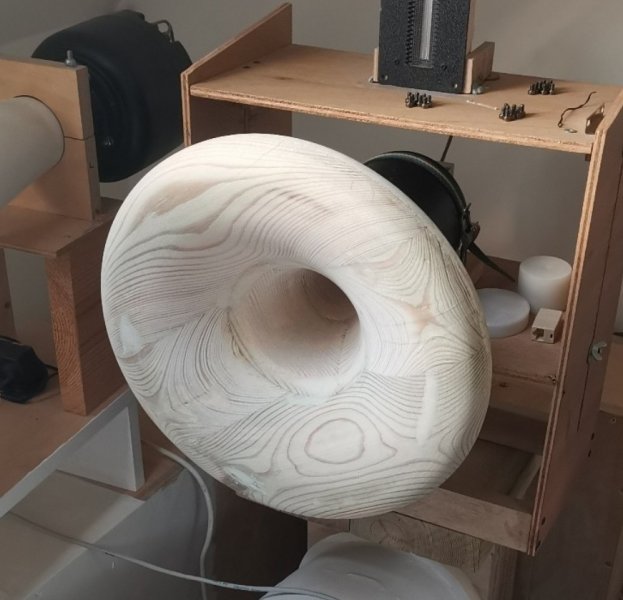
Le Cléac'h are often stated as the most sweet balanced easy sounding of all!
Their completely wrap around mouths, slightly faster opening profile than tractrix has real maths behind it.
Jean Michelle Le Cléac'h is sadly no longer with us, but he was a well respected contributor on DIYaudio too.
There were and probably still are, horn listening gatherings where various horn profiles were played and judged against each other. Blind testing!
The problem with the Le Cléac'h profile is that as frequency gets lower the horn diameters get huge!
A 400Hz cutoff Tractrix is about 28cm across. The same in Le Cléac'h profile is 48cm!
A 200Hz horn is 94cm in diameter.
A mid bass horn would be over 2m!
Not practical in most domestic settings..
Forget sub bass
Higher frequency is doable though.
I decided to make a 550Hz Le Cléac'h horn to compare with the T-400.
At 32cm across it wouldn't fit on my lathe..
I made a simple horn lathe out of my 30cm diameter end sander.
It rotates nice and fast too.
The profile from Hornresp

Template guide made

Gluing up some nice cheap soft wood.
I made a simple tool rest and off we go


The larger flare part

Starting turning, took quite a while to get it balanced though
High speed smoothing

Throat profiling

Glued together

Then a pair

Test listening

I had by that time made by own original sized imperial aluminium screw on adapters for the Vitaxox S2.
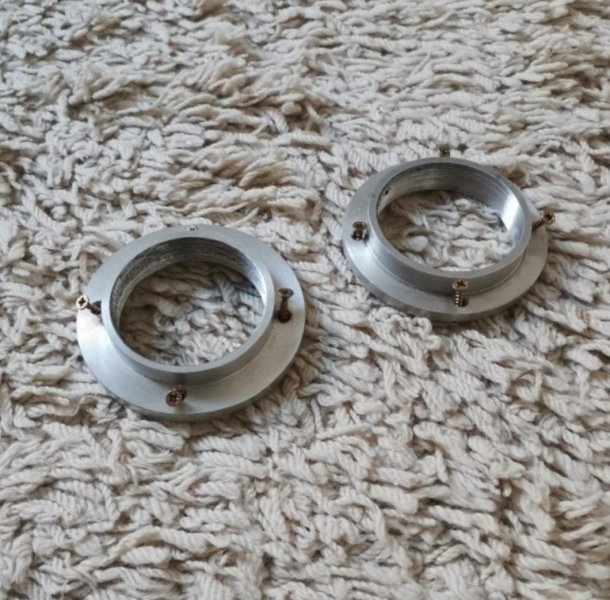
Have lathes will turn
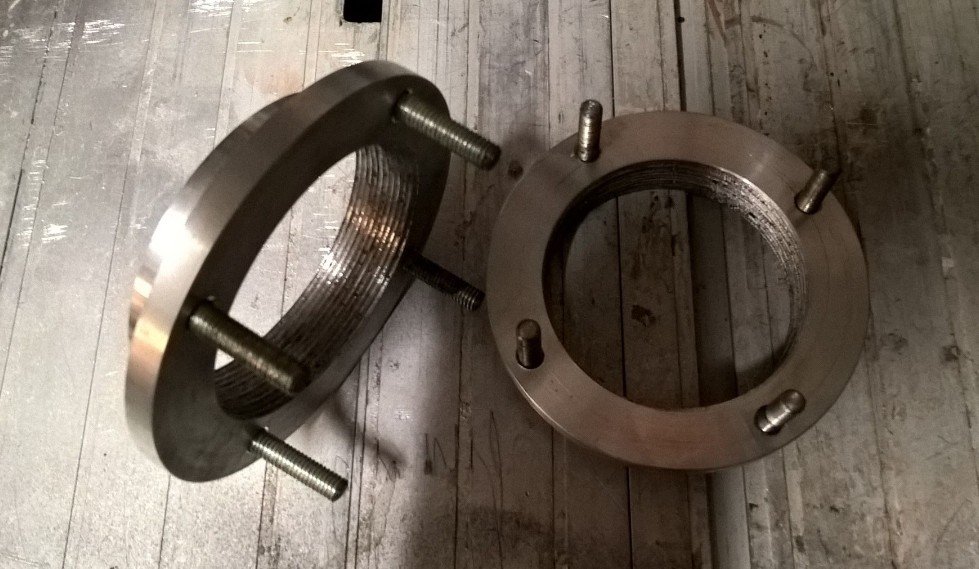
Test fitting
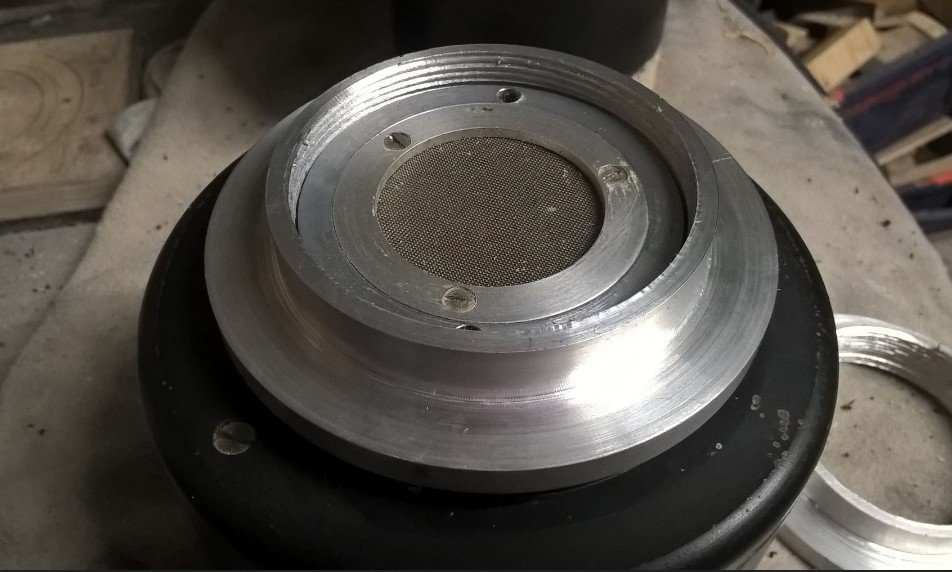
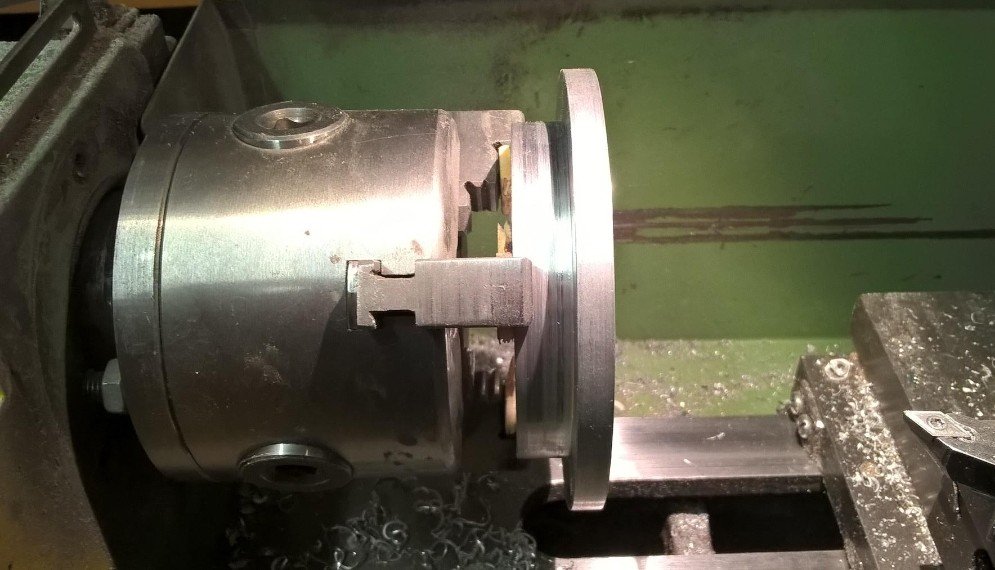
Here's the Le Cléac'h horns painted with underlying sand finish - it excites the little soundwaves at these frequencies and makes them sound even better..
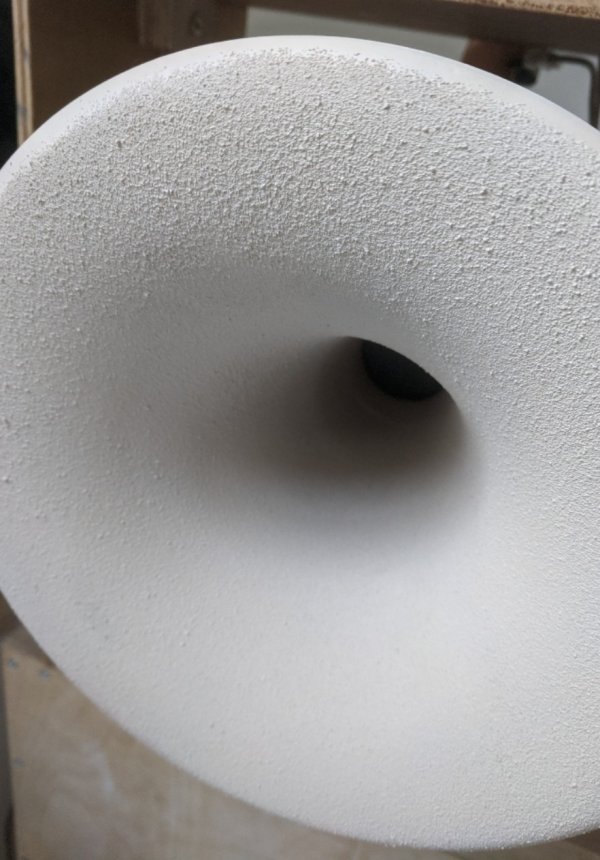
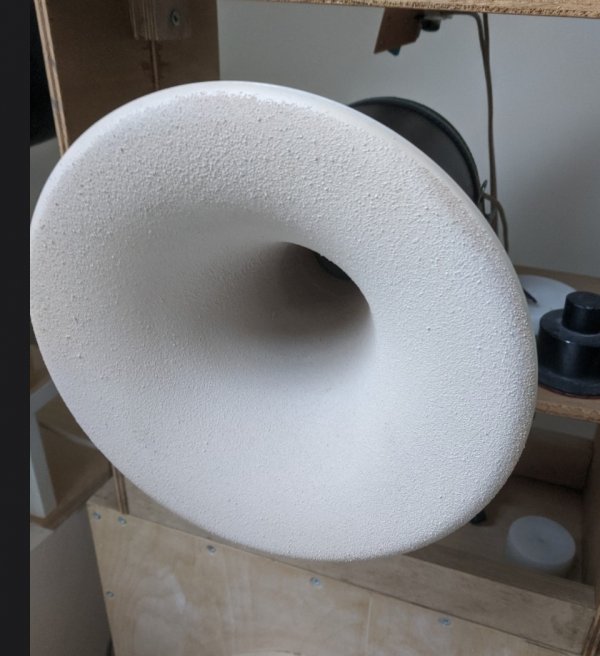
Measured nicely too
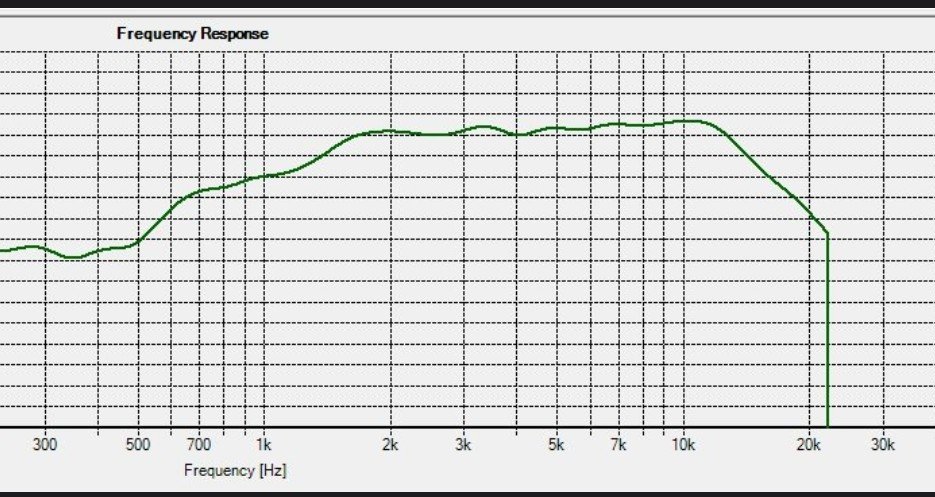
The sound? - smoother integration of the soundwaves as they exit the mouth and blend into the room is audible.
I use these most of the time.
I switch back to the T-400 horns from time to time for a change / confirmation.
The T-550s I made back in 2014 don't get a look in anymore.

Have lathes will turn

Test fitting


Here's the Le Cléac'h horns painted with underlying sand finish - it excites the little soundwaves at these frequencies and makes them sound even better..


Measured nicely too

The sound? - smoother integration of the soundwaves as they exit the mouth and blend into the room is audible.
I use these most of the time.
I switch back to the T-400 horns from time to time for a change / confirmation.
The T-550s I made back in 2014 don't get a look in anymore.
Another update for Najda!
I had a 5v linear PSU already.
Along the way I decided to upgrade the 12-0-12v power supply to the Najda DSP XO DAC board.
I went for an AC step down transformer, 50VA TOROIDAL TX 2X12V from RS.
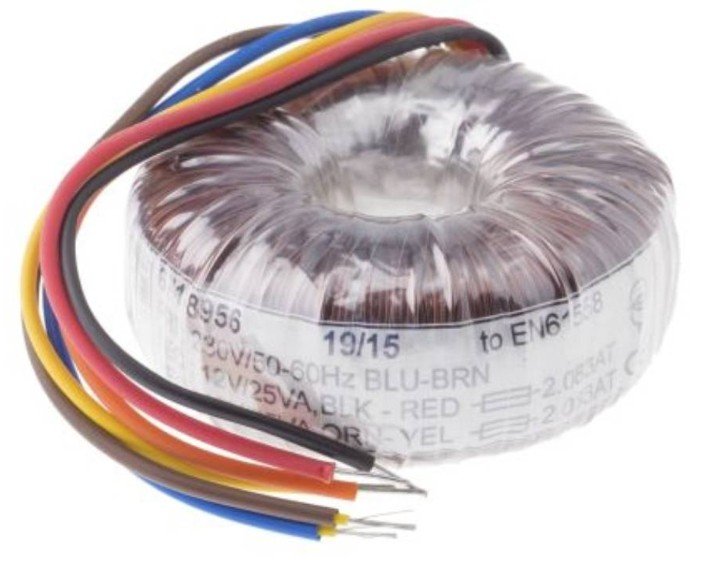
The regulator next to the Najda board.
The AC transformer in a remote in a steel case I fabricated to keep that well away from things.
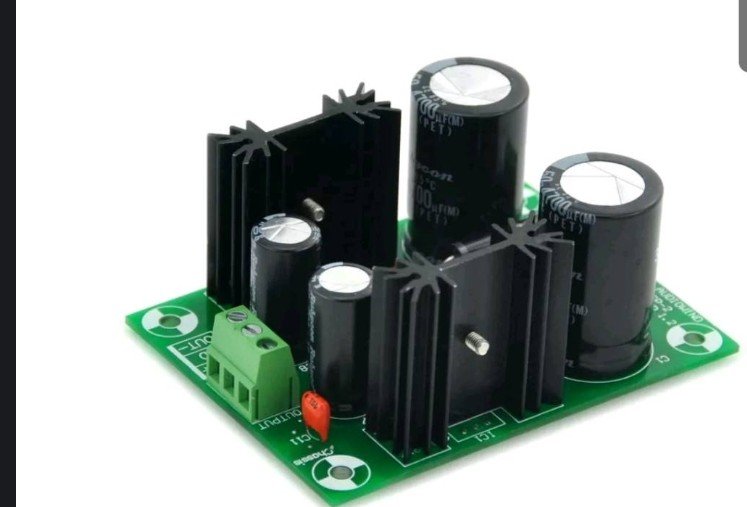
Shielded AC +12-0-12V supplied in via a suitable 3 pin chassis socket, swapping out the current IEC 240V socket.
It's the last piece in the improved power supply project.
I've already got linear supplies everywhere else.
Needed order some steel sheet and fire up the MIG welder
The rest I had in the parts bin pretty much.
Dual winding / output traffo from RS plumbed was in.
The 12-0-12 AC output is via a plaited RS type A PTFE insulated wire I had in 3 suitable colours.
This is fed with plenty of free space around it to the AC to DC linear regulator input that is close to the Najda 12-0-12 DC input.
+12v, Gnd and -12v DC are supplied as required.
Powered up.. good, the magic smoke stayed where it should be!
All works.
I let things warm up and it sounded mighty fine.
This solution replaced the Mouser high quality, low ripple etc very high frequency switching mode PSU that I've had since day one of Najda.
I was completely linear now!
I had a 5v linear PSU already.
Along the way I decided to upgrade the 12-0-12v power supply to the Najda DSP XO DAC board.
I went for an AC step down transformer, 50VA TOROIDAL TX 2X12V from RS.

The regulator next to the Najda board.
The AC transformer in a remote in a steel case I fabricated to keep that well away from things.

Shielded AC +12-0-12V supplied in via a suitable 3 pin chassis socket, swapping out the current IEC 240V socket.
It's the last piece in the improved power supply project.
I've already got linear supplies everywhere else.
Needed order some steel sheet and fire up the MIG welder
The rest I had in the parts bin pretty much.
Dual winding / output traffo from RS plumbed was in.
The 12-0-12 AC output is via a plaited RS type A PTFE insulated wire I had in 3 suitable colours.
This is fed with plenty of free space around it to the AC to DC linear regulator input that is close to the Najda 12-0-12 DC input.
+12v, Gnd and -12v DC are supplied as required.
Powered up.. good, the magic smoke stayed where it should be!
All works.
I let things warm up and it sounded mighty fine.
This solution replaced the Mouser high quality, low ripple etc very high frequency switching mode PSU that I've had since day one of Najda.
I was completely linear now!
I decided to try RPi streaming to see what it could bring to the party.
Having access to millions of tracks from Spotify or CD and above quality from Qobuz etc was just too tempting.
I bought a second hand RPi 3 with a Hifiberry Digi +.
First of all I messed about to get the Hifiberry DiGI+ DAC and RPi to work.
I was not going to use that going forward, as Rpi would be connected via I2S directly to Najda.
I was wondering if there was a setting for that in Volumio?
I'd get into all that later.
I had got a Berry and want to try it.
Once set up music flowed out from the Hifiberry via my trusty DPA enlightenment DAC and into my headphones. Hard to evaluate the sound on phones, clean, bit thin after the Chromecast Audio..
Million times better than the 3.5mm jack though
Only fly in the ointment and something I don't want through my Vitavox S2's / Raal Lazy Ribbon tweets is an annoying 'pop' every track change.
Will have to search to see if MartinT had that and has a fix for it..
Some pics.
The RPi and Tophat Hifi berry.

Trusty old DPA Enlightenment DAC brought down from the loft.

It worked.
Having access to millions of tracks from Spotify or CD and above quality from Qobuz etc was just too tempting.
I bought a second hand RPi 3 with a Hifiberry Digi +.
First of all I messed about to get the Hifiberry DiGI+ DAC and RPi to work.
I was not going to use that going forward, as Rpi would be connected via I2S directly to Najda.
I was wondering if there was a setting for that in Volumio?
I'd get into all that later.
I had got a Berry and want to try it.
Once set up music flowed out from the Hifiberry via my trusty DPA enlightenment DAC and into my headphones. Hard to evaluate the sound on phones, clean, bit thin after the Chromecast Audio..
Million times better than the 3.5mm jack though
Only fly in the ointment and something I don't want through my Vitavox S2's / Raal Lazy Ribbon tweets is an annoying 'pop' every track change.
Will have to search to see if MartinT had that and has a fix for it..
Some pics.
The RPi and Tophat Hifi berry.
Trusty old DPA Enlightenment DAC brought down from the loft.
It worked.
Having got the RPi to work stand alone with Spotify I decided on removing the WaveIO (wired to Najda's I2S input) and putting the RPi in its place rather than going DAC on RPi and into the usual SPDif input.
Ditching JRiver / Laptop / WaveIO was a bit of a wrench - they'd served me well over the years..
All reading pointed to the RPi output needing reclocking..
A Kali reclocker was ordered from Allo Europe.
Kali the Indian Goddess of time.
She's pretty fearsome!
These close up views showed me all I needed to see.
Kali (i2s Reclocker) - EU
Both RPI and Kali would need linear 5VDC.
Ditching JRiver / Laptop / WaveIO was a bit of a wrench - they'd served me well over the years..
All reading pointed to the RPi output needing reclocking..
A Kali reclocker was ordered from Allo Europe.
Kali the Indian Goddess of time.
She's pretty fearsome!
These close up views showed me all I needed to see.
Kali (i2s Reclocker) - EU
Both RPI and Kali would need linear 5VDC.
Here's a close up of Kali and her potential light show
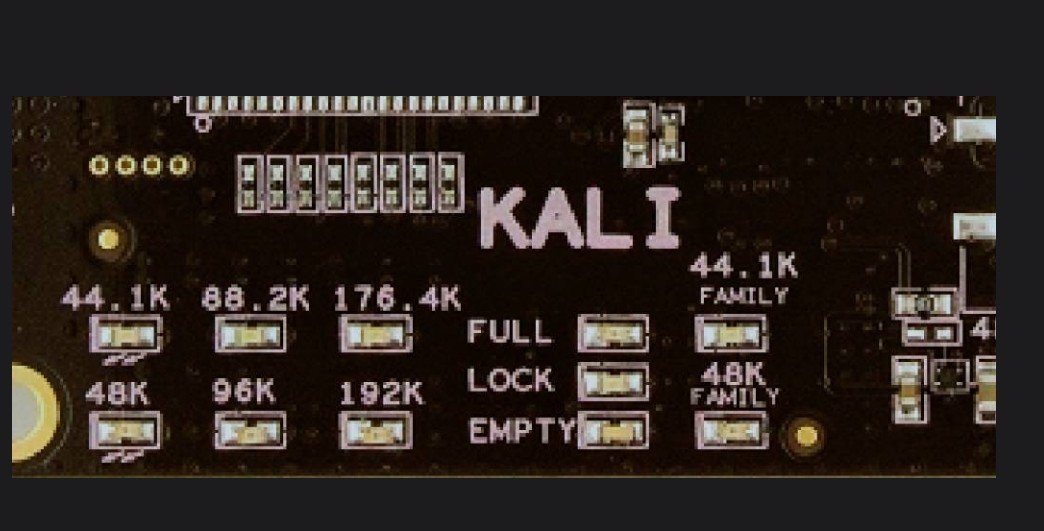
I had a few problems not knowing what to set the Dac to in Volumio.
There's a list as long as your arm and some.
Using the obvious ones gave a very strange music presentation.
Sort of delayed and wrong position of some instruments - most prominent on some tracks but not all, most strange.
An email to Allo support cleared it up.
R-Pi DAC is the right one.
After concerted listening I found the new linear PSUs had cleaned things up.
It was not a massive change but very worth while.
Overall I was very happy with the sound.
It definitely moved things on since using the laptop and Flacs.
Partly down to eliminating the laptop I guess, but also the improved power supplies everywhere.
I didn't find I was lacking dynamics, detail etc or it was a low res version of what it might be.. quite the opposite.
Quite something to be saying about Spotify premium.
So a cheap RPi, a rather special reclocker, I2S input into Najda, linear PSUs everywhere and Spotify gives a very, very good front end.
This is the exact opposite of trying to stream Spotify via the laptop.
It was as if something was sabotaging the Spotify sound with the laptop.
All that had gone and amazing dynamics and bass depth were achieved.
Having the entire Spotify catalogue at your finger tips is rather compelling, but only if it's sounds good.
I then explored Qobuz.
£12 odd a month + £2.99 for Volumio premium.
We already had Spotify premium family at £15 a month.
Still, even all that lot is cheaper than a few CDs every month - yeah remember buying those..

I had a few problems not knowing what to set the Dac to in Volumio.
There's a list as long as your arm and some.
Using the obvious ones gave a very strange music presentation.
Sort of delayed and wrong position of some instruments - most prominent on some tracks but not all, most strange.
An email to Allo support cleared it up.
R-Pi DAC is the right one.
After concerted listening I found the new linear PSUs had cleaned things up.
It was not a massive change but very worth while.
Overall I was very happy with the sound.
It definitely moved things on since using the laptop and Flacs.
Partly down to eliminating the laptop I guess, but also the improved power supplies everywhere.
I didn't find I was lacking dynamics, detail etc or it was a low res version of what it might be.. quite the opposite.
Quite something to be saying about Spotify premium.
So a cheap RPi, a rather special reclocker, I2S input into Najda, linear PSUs everywhere and Spotify gives a very, very good front end.
This is the exact opposite of trying to stream Spotify via the laptop.
It was as if something was sabotaging the Spotify sound with the laptop.
All that had gone and amazing dynamics and bass depth were achieved.
Having the entire Spotify catalogue at your finger tips is rather compelling, but only if it's sounds good.
I then explored Qobuz.
£12 odd a month + £2.99 for Volumio premium.
We already had Spotify premium family at £15 a month.
Still, even all that lot is cheaper than a few CDs every month - yeah remember buying those..
Last edited:
What an amazing journey. Thank you for posting. I’d love to make a pair of horn speakers some day. Your project is an inspiration. I wish I could hear it!Here's a close up of Kali and her potential light show
View attachment 125080
I had a few problems not knowing what to set the Dac to in Volumio.
There's a list as long as your arm and some.
Using the obvious ones gave a very strange music presentation.
Sort of delayed and wrong position of some instruments - most prominent on some tracks but not all, most strange.
An email to Allo support cleared it up.
R-Pi DAC is the right one.
After concerted listening I found the new linear PSUs had cleaned things up.
It was not a massive change but very worth while.
Overall I was very happy with the sound.
It definitely moved things on since using the laptop and Flacs.
Partly down to eliminating the laptop I guess, but also the improved power supplies everywhere.
I didn't find I was lacking dynamics, detail etc or it was a low res version of what it might be.. quite the opposite.
Quite something to be saying about Spotify premium.
So a cheap RPi, a rather special reclocker, I2S input into Najda, linear PSUs everywhere and Spotify gives a very, very good front end.
This is the exact opposite of trying to stream Spotify via the laptop.
It was as if something was sabotaging the Spotify sound with the laptop.
All that had gone and amazing dynamics and bass depth were achieved.
Having the entire Spotify catalogue at your finger tips is rather compelling, but only if it's sounds good.
I then explored Qobuz.
£12 odd a month + £2.99 for Volumio premium.
We already had Spotify premium family at £15 a month.
Still, even all that lot is cheaper than a few CDs every month - yeah remember buying those..
That's a difficult one.Oh my. If you are willing and able, what is your "guesstimate" on total time / money spent on this project to date?
The hardware is fairly easy to assess..
Time spent - it's a hobby, so a pleasure.
Money spent, less than playing golf or on my other / former passion of circuit racing Caterham 7s
That's me in the yellow one ~450HP/tonne.
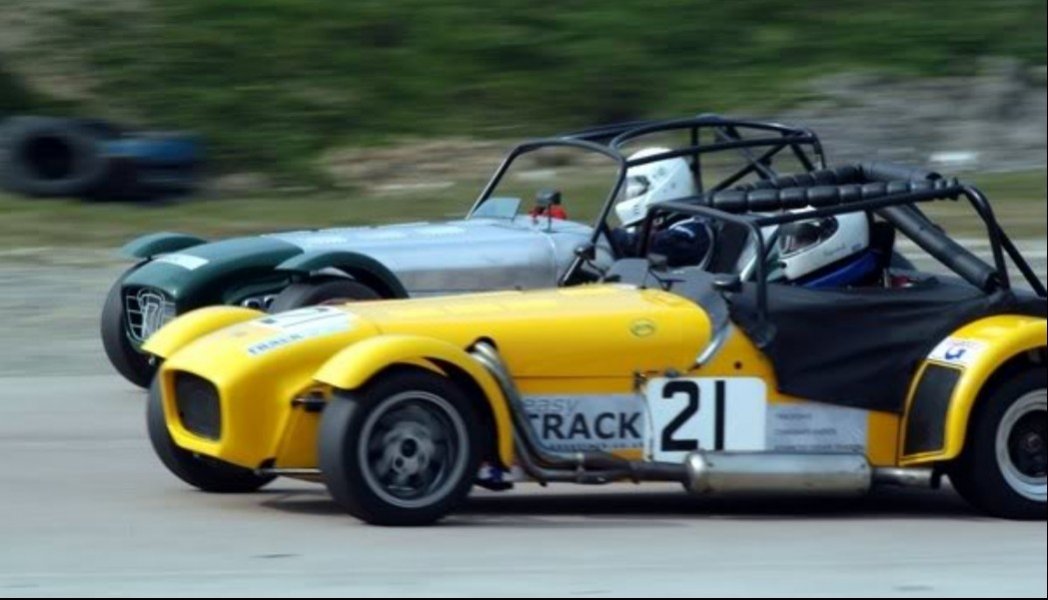
I made this schematic a while back.
Will help envisage the system - it's at the right level of development to where we are in the journey on this thread, almost..
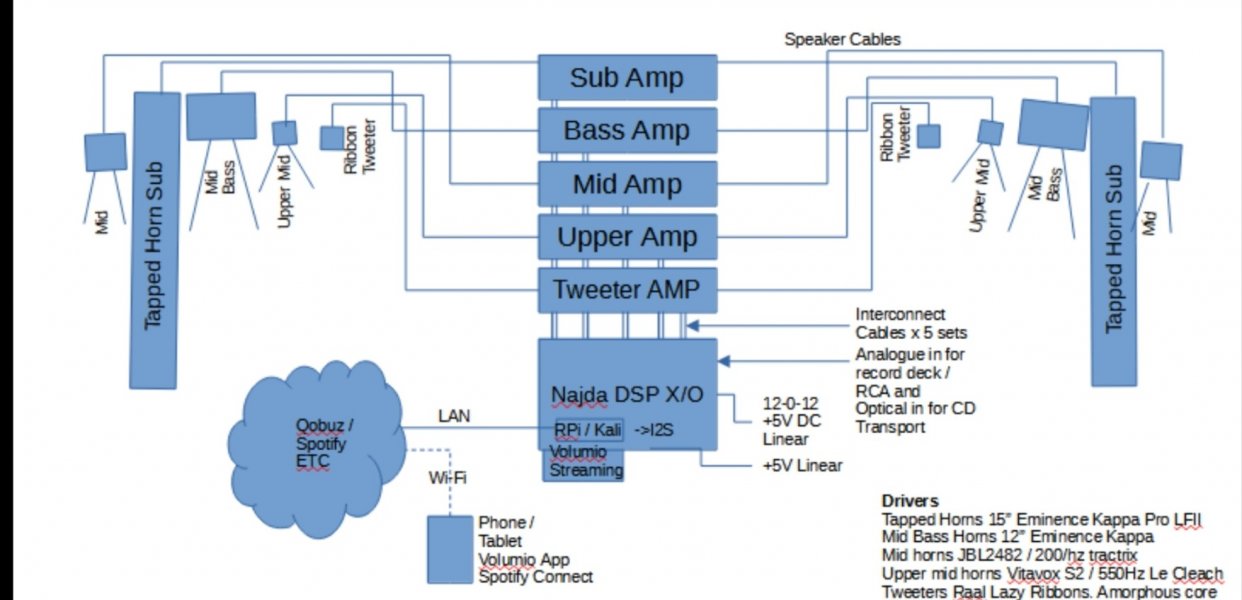
The actual individual parts to a horn system are not that expensive (unless you go for the most expensive of everything).
Buying 2nd hand and refurbishing drivers refurbished is good value.
Premium birch plywood was quite cheap 10yrs ago when I was chopping lots
What an amazing journey. Thank you for posting. I’d love to make a pair of horn speakers some day. Your project is an inspiration. I wish I could hear it!
I was going to save this for later but will publish now..
Here's what many hifi enthusiasts who heard it said (mostly from the hifi Wigwam and other chat fora), who visited.
Obviously they were writing on an open chat forum and probably didn't want to hurt my feelings..
Coco "I was really looking forward to hearing these as this similar to what I plan to do with my own system.
I certainly wasn't disappointed. They sound absolutely effortless - you get a sense of incredible power, but completely under control. The tapped horn bass is like nothing you've ever heard before. It just pressurises the room and makes it feel like it's not even trying. Like distant thunder!"
and after later listening
"it sounded very good indeed! It has amazing presence and a really effortless presentation. The tube amp has sweetened the upper mid which sounds less grey and more vivid than I previously remember. The slight residual bloom on the upper bass has been eliminated, too. As for the way they pressurise the room at LF... :shock: I imagine they could be used as a weapon/torture device!
Everyone should hear this, time for a bake off?
Edit: Oh and they are f**cking enormous. Nothing prepares you for quite how large they are. Even having seen them several times, they still shock me. The photos just don't capture the sheer volume they take up!" 2011
Montesquieu "the clarity of Steve's setup is something else. I think the emotional connection is really there in spades, so direct and detailed, but far from dry and clinical. Quite an achievement there, Steve." 2011
ADPully "I had to listen to the fabled bass on Steves system today it truely was pretty amazing. Total control authority and power." 2011
Alfie "As I said in the SPU & FR thread these really sounded very special last night :love: words fail to describe how well they hang together, well when Basshead Steve's not turning up the bass & mid-bass horns a little to high!
They are stunning from the woodwork of the conicals through to that effortless sound! " 2011
Turning Japenese "I can confirm the bass is mightily impressive (as is the whole system) and enjoyed a very pleasant evening yesterday on the flimsy excuse of picking up the cabs for nick" 2011
Voiceofthemysterions "They are on another level again from the Tannoys for sure in terms of depth, resolution, imaging and 'air'/transparency, very 'easy' and coherent to listen to.
The tapped horns are very fast and direct, good thing the floor is solid!
I think it is quite astounding what Steve has engineered with speakers and parts bought at real-world prices and a garage workshop.
The results are exemplary in terms of both sound and the woodwork, bearing in mind this is still prototype form.
I'd have something like this if I had the room required, no doubt about it. Very musical indeed, a pleasure to listen to.
Quite an ear-opener switching between a single valve amp and a single TA-2020 t-amp incidentally -not so much in it between them..." Nov 2011
A short Scalford report
"System 13: that's 'Steves' home built horn speakers, some SET amps, and some T-amps.
One of the most phenomenal home built 'speaker set ups ever, and beautifully engineered with incredible detail to response/phasing."
Non-smoking man
"Last night I spent listening to Steve's fabulous horns and learnt a lot from him about horn systems in general and his in particular. That sound is my new reference." Oct 2012
I was lucky enough to recently hear Steves latest version of these (electronic pre-amp x-overs) with the Vitavox S2 compression drivers. It has changed a lot since the earlier system/s which were pretty impressive in themselves.
graham67
I have to say i cannot think of a better sounding hi-fi. it seems to do everything right.
massive scale, very deep but tight bass, fabulous rhythm, forgiving of compressed rock/pop.
Doesn't demand a high quality source - a prosaic MF Cdp (on transport duty) or vinyl front end all sound great.
Non fatiguing Fun to listen to For a horn system, the sweetpot is wide, so can enjoy from multiple spots in the room.
And there is no sign of the honky tonks! August 2013
BTH K-10A
It was great to meet you the other week and have the chance to hear you amazing speakers. August 2013
Bonzo
I have heard 2 way Cessaro's and 2 and 3 way Avantgarde's, also Tune Audio Animas, so it was awesome to compare them to a 5-way horn system which was DIY. Steve ran me through what each driver meant and what specific frequency he covered. I had never heard a church organ in an hifi before, but Steve's tapped horns go down so low that it feels you are listening to new notes in classical, one that you would not know existed. Jan 2014
Montesquieu - revisted
So many impressions! I've been lucky enough to hear Steve's horns a number of times as they've gone through their evolution. Quite early on it was fair to say they were obviously something very different to the norm - detailed, direct, very acute sense of space. A real sense of occasion, and they've gone through a lot of evolution in the intervening time.
This time felt a little different though. With the tractrix horns, and the ribbons settled in, the sense of direct communication was still there but now accompanied by a palpable sense of ease and naturalness. Still the wow factor but it's not grabbing you by the lapels, rather it's drawing you into the music.
I was also profoundly impressed by the DSP X/O DAC Pre. This is a big step up from previously, and I'm sure a big part of the story where clarity and detail come together - so often clarity and detail are the enemy of musical feel but not here.
Coming from spending the previous weekend at the St John Smiths Square Schubertiade - five full-length Schubert concerts over two days, mainly Lieder but also some chamber and piano music - it struck me that this is a very very rare system that gets the natural feel of a piano right (in fact I can hardly think of another). Feb 2014
Ratcatcher
Very impressive is what I thought! Big, bold and effortless all spring to mind with an ease of communication that puts you immediately into that rainy sunday afternoon feeling. Considering the outlay (not taking into account the long hard hours in a shed obviously) it’s an amazing achievement and I doubt few systems with similar costs could touch it.
Feb 2014
Many accolades which is what one would expect given your "over the top" effort and attention to detail. Thank you for sharing.
Yeah different strokes for different folks..Many accolades which is what one would expect given your "over the top" effort and attention to detail. Thank you for sharing.
Some don't say much on the day and then reported more.
I had a guy listening a couple of years ago who is a Dolby engineer and avid hifi enthusiast.
Really interesting to get his take on what he was hearing.
He liked it a lot.
He said that multiway really works when the crossovers and timing are correctly done. The drivers just vanish but each does it's expert job at reproduction with excitement.
The repeat visits are always interesting for me.
Here's a couple more reviews
Martin "Thanks, Steve, for a very entertaining afternoon. Your speakers have come a long way and the sound is highly integrated (considering there are five drivers), incredibly focussed, tight, wide and tall. The height dispersion thing is interesting, no doubt because of the disposition of the drivers. The sound you are achieving from a file-based setup is remarkable.
Perhaps the most remarkable aspect was listening to vinyl via an ADC, DSP and DAC back to analogue again!"
John "I agree with Martin a great afternoon. Was so surprised that Analogue to Digital and back to analogue managed to stay so clean"
"Your SP10 sounded really nice on Saturday. I know these days like me its mostly file based music but do not give up on the TT as it creates some great sounds".
"The Najda is very impressive I could not hear any colouration from it".
For me, the overall sound has improved to my ears since then.
Better front end, still more attention to the crossovers in coordination with phase alignment, and room treatment being three items I will cover in due course.
I next set about integrating RPi and Kali Reclocker into Najda.
The lightshow of what Res was playing was directed to the 3mm holes in the front panel.
These had been for the same function but LEDs.
I couldn't physically move or relocate the LEDs onboard Kali.
So I adopted a budget fibre optic solution.
Available on eBay.
I machined a light rod holder to the same dimensions as Kali's LEDs
Bit of milling and drilling
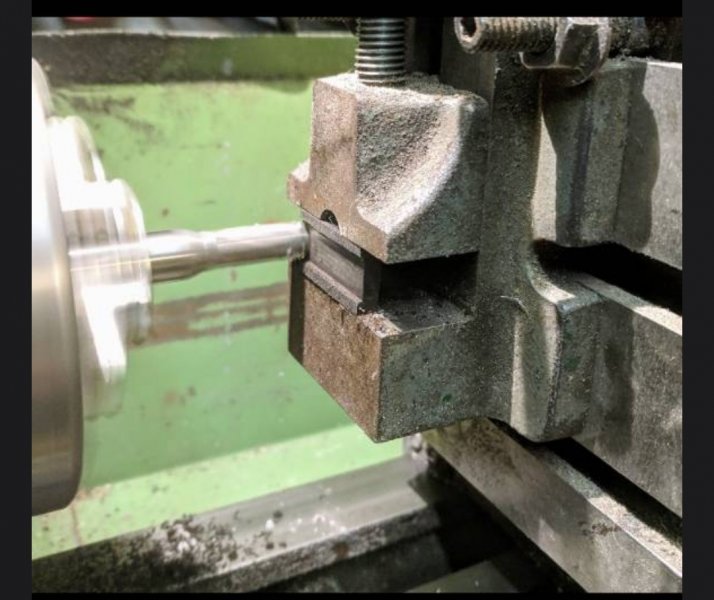
In place shining through
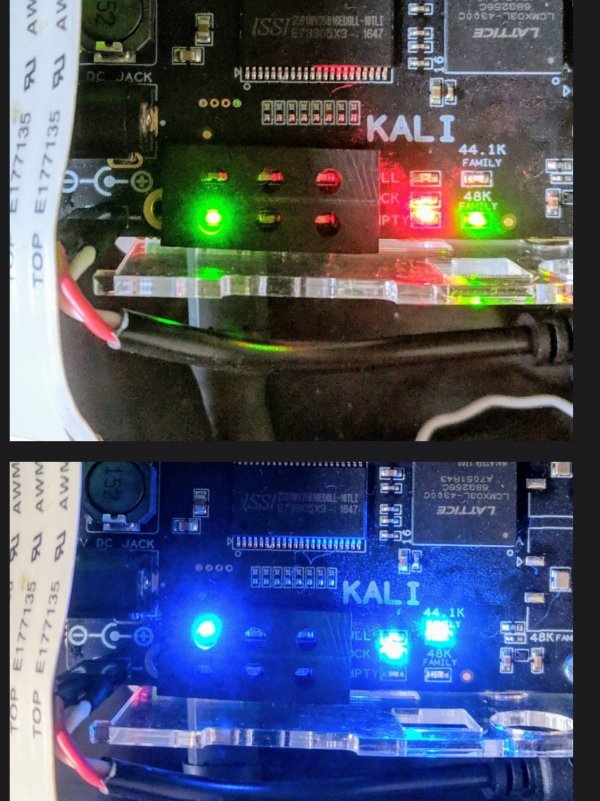
I didn't want to glue this to the board so I made tiny padded clamps to hold the light tube holder in place
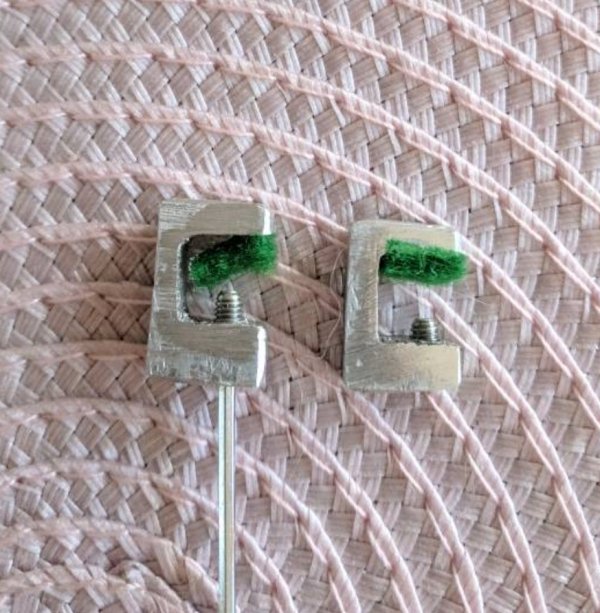
Then the tubes were bent to reach both the front panel holes and the holder on the Kali board. Done very carefully using a paint stripper heat gun!
5m of light tube only did 5 lights! I ordered some more.
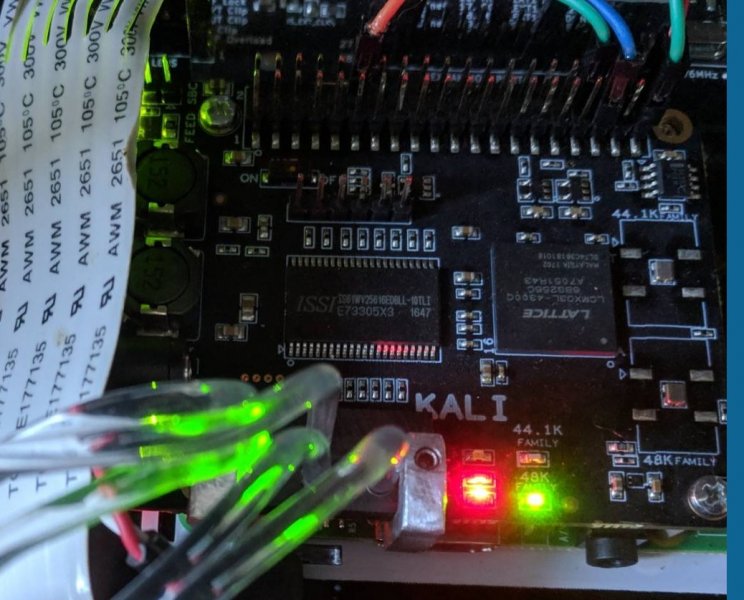
The front panel show.
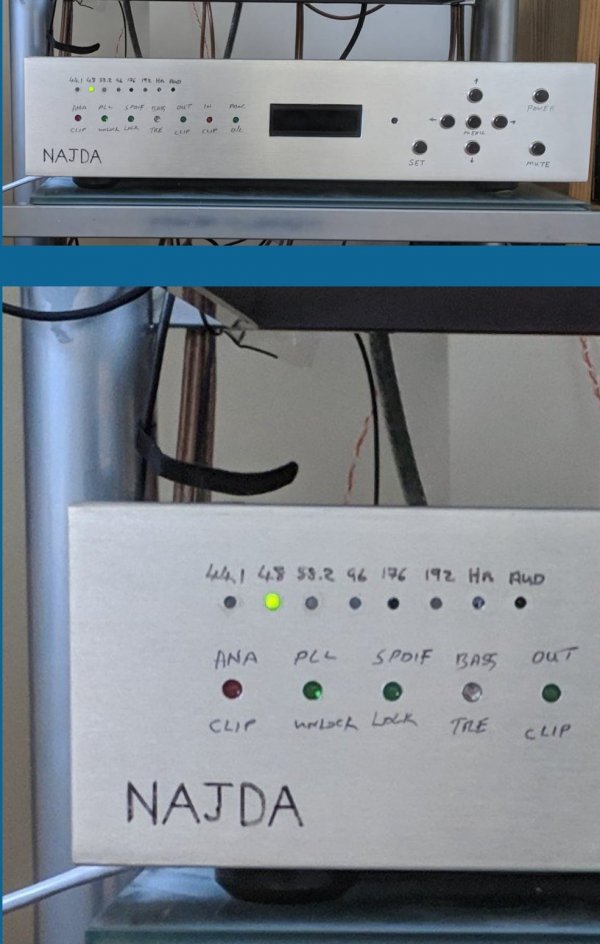
Some may comment on the DIY rustic nature of the Najda front case.
Swanky boxes and bling don't do much for me!
Give me functional and excellence in operation at good value anyday.
Right from the start I've seen and valued everything I do as a working prototype.
I make it / implement it.
If it works satisfactorily it stays until some engineering reason causes me to improve it, or swap it out!
I'm not very bothered by aesthetics.
I understand why commercial producers do it $$$$$, and why buyers want it, but it does nothing for the sound!
The lightshow of what Res was playing was directed to the 3mm holes in the front panel.
These had been for the same function but LEDs.
I couldn't physically move or relocate the LEDs onboard Kali.
So I adopted a budget fibre optic solution.
Available on eBay.
I machined a light rod holder to the same dimensions as Kali's LEDs
Bit of milling and drilling

In place shining through

I didn't want to glue this to the board so I made tiny padded clamps to hold the light tube holder in place

Then the tubes were bent to reach both the front panel holes and the holder on the Kali board. Done very carefully using a paint stripper heat gun!
5m of light tube only did 5 lights! I ordered some more.

The front panel show.

Some may comment on the DIY rustic nature of the Najda front case.
Swanky boxes and bling don't do much for me!
Give me functional and excellence in operation at good value anyday.
Right from the start I've seen and valued everything I do as a working prototype.
I make it / implement it.
If it works satisfactorily it stays until some engineering reason causes me to improve it, or swap it out!
I'm not very bothered by aesthetics.
I understand why commercial producers do it $$$$$, and why buyers want it, but it does nothing for the sound!
Last edited:
Similar threads
- Replies
- 30
- Views
- 7K
- Replies
- 85
- Views
- 14K
- Replies
- 7
- Views
- 3K
- Replies
- 67
- Views
- 26K
- Replies
- 1K
- Views
- 193K
| Steve Williams Site Founder | Site Owner | Administrator | Ron Resnick Site Owner | Administrator | Julian (The Fixer) Website Build | Marketing Managersing |


